#it's also just a repetition of many of the series' biggest flaws in ways which are not new or even especially egregious just disappointing
Text
i think my opinion on asc so far is that it has enough decent ideas and characters on the surface to spark interest and feel engaging but if you apply literally any modicum of scrutiny or pressure to any of the writing decisions then the entire thing just kind of crumbles and falls apart
#i mean ill take it over an arc like avos that's boring as hell#ill happily take lightleap and frostpaw and curlfeather and etc and hit them with my 'youre better written in my head' beam#but man i am needing to do a lot of mental negotiating with asc in order to enjoy it#like. this isn't cinemasins nitpicking over a kids' book at this point it's breathing a little too heavily next to a house of cards#it's also just a repetition of many of the series' biggest flaws in ways which are not new or even especially egregious just disappointing#like yaaay whup tee doo we've got 'gendered discrepancies in how the characters are written' and 'godless heathen antagonists'#how fun. my favourites (sarcasm)#asc spoilers
21 notes
·
View notes
Text
A look at: Moon.
Writing reviews is always a learning experience for me, and one of the important things I’ve learned is that, sometimes, it’s pretty hard to write about certain individual games, visual novels, or such considering the kind of detail I like to go into. Therefore, this will be the first in a new series of mini reviews, or as mini as they get with me. Maybe there’s just not enough to a game to really give me details to dig into, or maybe it’s difficult to talk about without giving away more than I wish, or maybe there’s just something related to it that I’m more interested in talking about than the actual product; whatever the reason, these will hopefully be less rambly and excessive than my usual reviews, while still giving enough of an overview that they stand as proper reviews on their own. Either way, the subject of this post is an old, obscure visual novel from 1997 with a bit of history to it, called Moon.
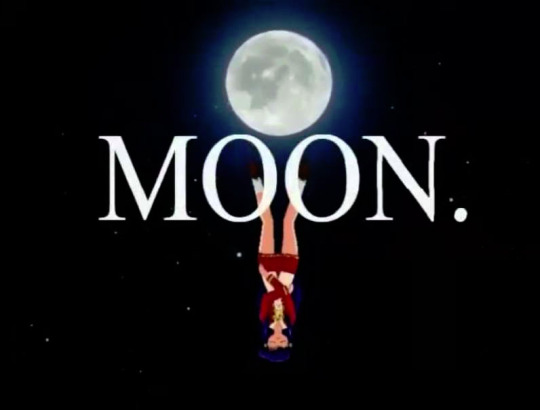
Moon was developed by Tactics, a humble developer of adult visual novels, and was the second one developed by them, with the first, Dōsei, seemingly just being, well, a plain H-game, and the third, One ~To the Radiant Season~, while still obscure, is actually fairly notable for being a prototype to Kanon in a lot of ways, as many key staff at Tactics would later break off to form Key afterwards, with them having also worked on Moon beforehand. Thus, Moon is in a very interesting spot when it comes to the progression of the developers that would change VNs as a genre with the release of Kanon, and that’s really the only reason I checked it out.
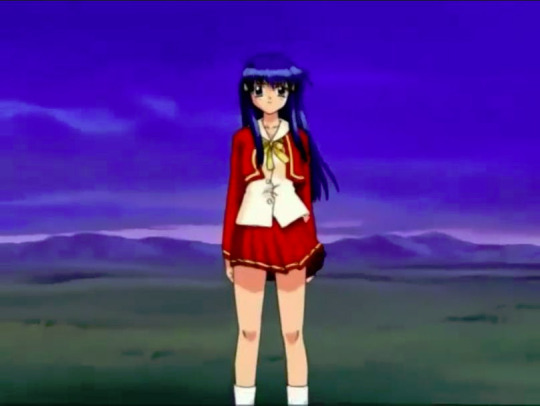
Moon follows Ikumi Amasawa, a girl who joins a mysterious organization called Fargo, which recruits others with the promise of acquiring an alleged “invisible strength” that can put one far ahead of ordinary humans, in order to investigate their possible connections to the murder of her mother, and if possible, take revenge on the ones responsible. Upon arriving at the Fargo facility, Ikumi quickly befriends two other initiates with ulterior motives of their own for joining: Haruka Mima, a determined girl with a cool attitude who keeps her goal to herself, and Yui Nakura, a cheerful, but naive girl who’s seeking to bring home her older sister, who joined Fargo several months prior. Though the three agree to become allies and help each other achieve their goals, they are quickly separated in different “classes” housed in different buildings, with Ikumi being assigned to Class A, the most prestigious of them all. Settling into her new life as a Fargo initiate, which mostly consists of “training” with the Minmes and Elpod, machines that confront her with various parts of her very troubled past for the purpose of “mental reinforcement” in the form of a vengeful doppelganger of herself, Ikumi gradually discovers many strange things about her situation, such as there only being one other member of Class A, that being Youko Kanuma, a quiet, cold woman who has been part of Fargo for many years. Additionally, Ikumi is forced to share her room with a strange boy who doesn’t volunteer his name, who, though part of Fargo itself, is quite low ranking, and more than a bit dim witted at times. Worst of all, upon finding a passage that allows her to access the buildings where her allies are kept, Ikumi finds that the other classes are subjected to horrific abuses by Fargo’s personnel in order to further their mental reinforcement. As Ikumi struggles to aid her allies however she can, the confrontations with her past begin to put a heavy strain on her mind, and the existence of the invisible strength Fargo claims to have starts to become more and more plausible.
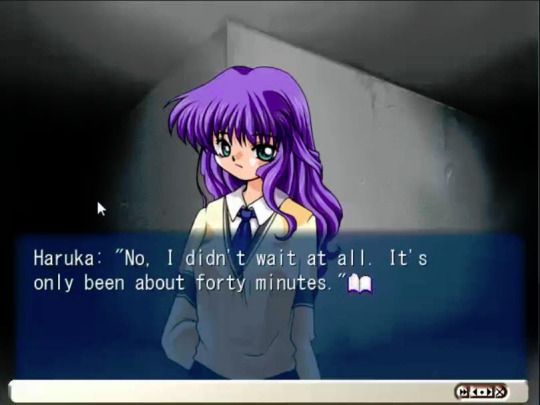
Needless to say, Moon isn’t exactly Clannad. I did not know much about this VN before I got into it, and finding it to be a psychological horror VN was a bit of a shock. Even more of a shock was just what form the majority of the horror came in. You see, even though One ~To the Radiant Season~, Kanon, and Air were all released as adult games, the h-scenes are very disconnected from the plot, most of the time, to the point of losing nothing from skipping them or even removing them from the game, and were pretty much just obligatory inclusions to help them sell better. From Clannad onward, most Key VNs have been clean to start. With Moon, on the other hand, you can’t go 5 minutes without running into some explicit scene, the main source being the Elpod sequences and the abuses the Fargo personnel inflict, and it wastes no time getting to them, at that. This is the biggest thing that drives off many of the few who go out of their way to experience Moon, and even with me having just watched an understandably censored playthrough of this on Youtube due to its shorter length, I almost quit very early into it, and definitely would have if I had actually played it. The Elpod is one thing, as the sequences are used for the purpose of developing Ikumi, but even then, most of them are just excessively disgusting more than disturbing, and that goes doubly for the sequences outside of it. Instead of really changing things up, they’re just content to get gradually more and more depraved, and outside of disgusting, the main thing I can even call them is repetitive. This is one of my biggest problems with Moon, and it was pretty hard for me to get into it because of it.
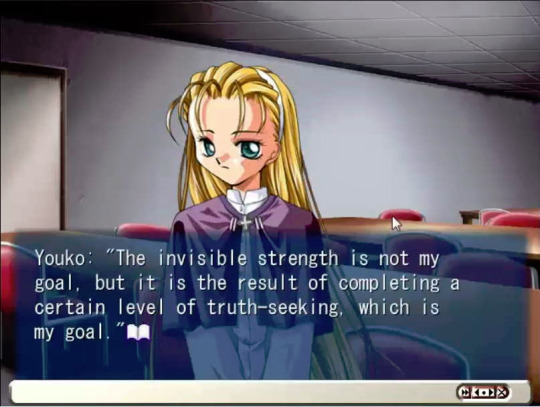
Another major problem I have with Moon is how it handles its cast. Moon is pretty short for a VN, only around 10 or 11 hours if you go straight for the true ending, and even though there are 7 endings in total, they don’t add much more time onto that, with two being worse variants on the true ending, and the rest being bad endings gotten through making bad choices. Having as small a cast as it does should naturally work fine with that, but they really aren’t balanced well. While Ikumi gets developed across the whole game, and Yui gets a good arc pretty early on, Haruka only gets a short arc that ends as quickly as it starts and doesn’t do a lot for her, Youko barely has any screentime despite establishing a good dynamic with Ikumi, and the boy doesn’t have much presence or relevance until late in the story. The pacing is just bizarre and rushed feeling.
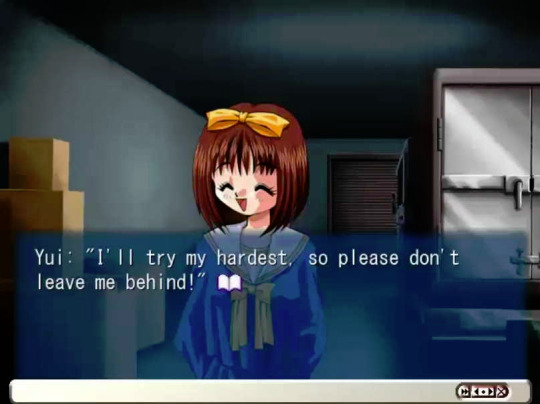
That’s not to say there aren’t a number of good points to Moon’s story. Ikumi is very well developed throughout the story, with the Minmes in particular leading to many melancholic scenes that make her quite sympathetic, and were definitely the high points of the normally rigid daily schedule much of the story takes place during for me. Despite the story’s flawed handling of some of them, the cast is still decent on a whole, with Youko’s gradually developing friendship with Ikumi and Yui’s development during her arc being some of the more memorable parts for me. The atmosphere is very well done, with the cramped, depressing corridors of the facility always feeling like they’re hiding something awful just around the corner, especially since you need to manually navigate the place using a map screen, and once the plot really kicks into high gear things become much more compelling, with the final days containing many high points in characterization and an infamous mindscrew of a sequence that, once looked back on with a more understanding eye, is actually quite fascinating in its own right.
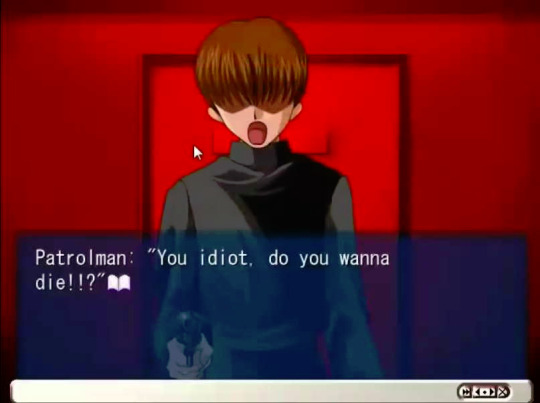
Visually, Moon’s art was done by Itaru Hinoue, the same artist as the majority of Key’s VNs, and it’s a lot rougher than the art of, say, Kanon. It’s not outright bad, but it looks very dated, with the designs and sprites not really sticking out. The CGs vary in quality, as some look pretty ridiculous, but others are quite good. Most impressive, though, is two animated intro sequences included in the DVD version, which happens to be the only version with an English patch anyway. They’re fairly brief, but do a great job of setting up the atmosphere and premise despite that.
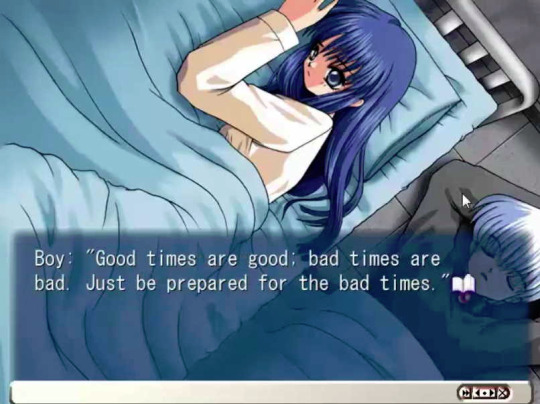
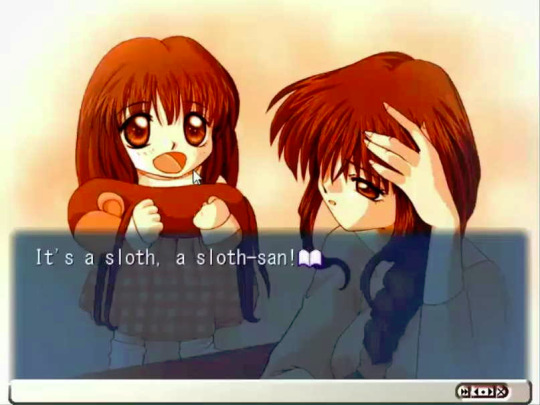
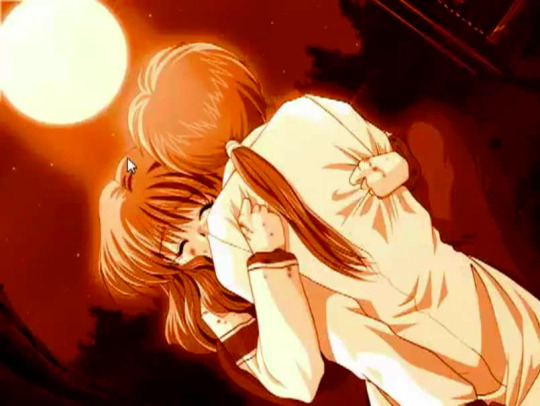
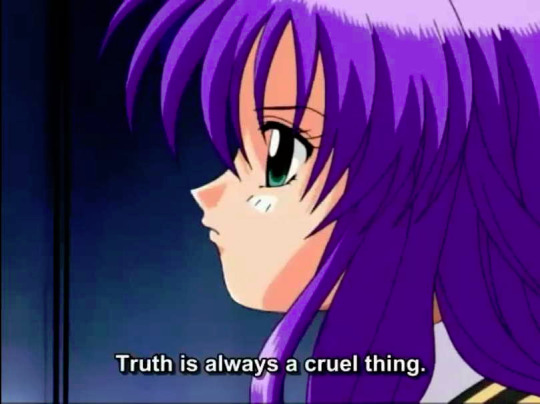
On the sound side, the soundtrack is great. It’s not a very big one, with only about 16 tracks, and the use of them can get a bit repetitive, but most of them are just a joy to listen to. From the electronic and tense Closed Space, to the wistful, yet peaceful The Place Where the Sun Shines, to Youko’s ethereal theme, to the credits theme, Sorrow, and especially the nostalgic music box theme, Memory, it’s worth looking up even if you hold no interest in the VN itself. There’s also voice acting, also added in the DVD version, and most of it is just average, with not many performances standing out, with the exception of Kahoru Sasajima as Ikumi, who delivers a very solid performance, especially during the more intense moments.
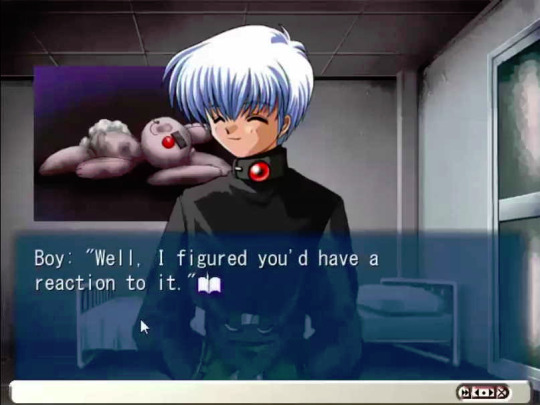
Overall, Moon can be a pretty hard sell. While I thought it was a decent experience by the end, its very offputting content, lack of similarity to any other Key works, and bleak atmosphere can make it pretty hard to go through even if you’re prepared for what’s to come. Even if you wanted a horror VN, there’s plenty others out there, like Chaos;Head and Chaos;Child, Higurashi: When They Cry, Wonderful Everyday, Raging Loop, or just about anything from nitro+. That said, if you can stick to the end, I definitely feel it becomes fairly satisfying, and when I got to thinking, I realized something that actually boosted my opinion quite a bit just by itself. As much as Moon is a story about cults and psychic powers with a somewhat unclear point to it all, it’s even more so just a story about a very troubled youth struggling with her grief, irrationally falling in with a bad crowd, and being forced to face her past and actions if she wishes to accomplish anything. Looking at the story that way, it’s actually quite well done, and going in with that in mind may even make it a bit more palatable. Still, I wouldn’t especially go out of my way to recommend it, and ultimately it’s still very far from being one of my favorite visual novels out there. Either way, that concludes my first mini review, which still turned out longer than I thought it would. My next post will be something unusual for me as well, but that’ll take a bit to come. Till next time.
-Scout
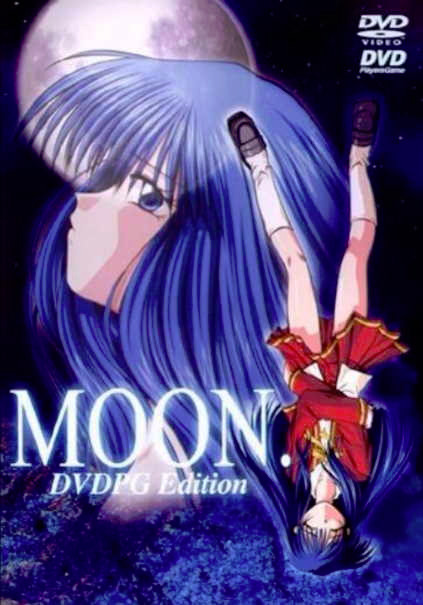
13 notes
·
View notes
Note
hey, welcome back! hope your exams and stuff went well, and that you're doing fine now.
i wanted to hear your opinion on nigar hatun. i remember seeing one post of yours in which you said that she wasn't a favourite of yours like you favoured other characters and honestly, same. i didn't really much understand the fascination with her. she was an interesting character, but i can't imagine having her as a favourite when there are so many more characters who are far more interesting. i wish they gave her an alternate arc. idk what it could be, i'd like to hear your opinion on it. one alternative ending i came up for her is that she was extremely angry at ibrahim for toying with her and hatice for keeping her sweet little esmanur from her so she joins hurrem to defeat them? which hurrem did try but it didn't really go anywhere and nigar was against hurrem for killing ibrahim which just was kinda frustrating. they literally give hurrem no ally in the harem [except mihrimah later on but mihri is overall varying in terms of power] so it would be good for her to have some support in the harem from people who actually hated her enemies like her. she had actual political support from iskender celebi, rustem, and ayaz pasha and all, sure, but she didn't have much support in the harem, like all powerful women of the harem were against her. nigar obviously wasn't powerful like a sultan but she was an old member of the harem, was respected and even though she kinda lost her dignity with the scandal, she could've regained it with hurrem's help. sumbul was there later on but he was just a very faithful servant and didn't really have any real motive to harm any of hurrem's enemies except for out of his loyalty whilst nigar could've cultivated a hatred for hatice and ibrahim. this is a basic plot but i would've kinda liked seeing it. there can be many more ways her character could've ended but it would be good seeing a woman who didn't bow to her feelings all the time. the sultanas couldn't really control their feelings when it came to love because they were princesses who were used to getting what they wanted most of the time but nigar was a servant who also suffered the hardships of slavery and it obviously would've made her tougher as a person so she could control her feelings better; idk, i feel like this is an aspect of women they could've explored [or if they did explore it, i don't remember it lol my memory lapses a lot so i don't remember the show 100%] anyway, would like to hear your thoughts on nigar. thank you. welcome back again <3

Thank you! <33 Yup, I'm fine and the exams went well. Happy Pride month to you, too! 🏳️🌈
Hehe, I wrote that post years ago and while Nigar still isn't one of my absolute favourite characters, I've warmed up to her quite a bit. And honestly, now with the wider experience in the fandom, I can say that she isn't all that loved as it looks like. I then was under the limited wrong impression that the BG Mamma forum was a metric of all the popular opinions and yes, they loved Nigar a lot and I was sometimes confused as to why, but really, that and the Russian fanbase are the only places I have encountered that appreciate her all that much. There are characters I find more interesting than her, that's for sure, but she has her charm and I'm firmly against people reducing her to "evil" or "manipulative" or "weak after she fell in love with Ibrahim", so forth.
The thing she sets her first impression with is her intelligence caused by her relatively high experience in the harem. The advice she gave to Hürrem opened the path to her whole goal (as she herself acknowledged in E41) and that makes for quite an impact for a more recurring character. Despite of this, I never viewed early Nigar as someone taking an open side, hence I didn't find her supposed betrayal to Hürrem surprising in the slightest: she is also trying to survive in this environment in any way she knows how and she can't really find a fully comfortable position, because she is well aware that everyone is thinking for their own gain in the end. Including her. So the only choice she has left is to direct herself to where the wind is blowing and get advantages for herself once she gets the chance. Because all the experience has taught her to repress her feelings (E10 to Hürrem: "In this castle you can't show weakness."), opt to be the more level-headed person and seek for the more pragmatic solutions.
And yet she is very sensitive and perceptive to people that are different than the others or that are in need and is willing to lend them her hand. She adviced and helped Hürrem because she found potential in her, because she wanted to see her succeed, but not through endangering her own self or other people in the process (she told Hürrem that her game had gone too far again in E41), but through negotiation, compromise and adaption, to know when to start and when to stop and be respectful to those above her, no matter how hard or limiting that may look in Hürrem's eyes. Hürrem had the tendency in viewing every sign of support that came to her as granted, she still had that naive part of innocence in her in S01 and early on was in a desparate need of someone to lean on and unconditionally follow her path, that's why when Nigar diverted from that path, it hurt and took her a while to start trusting her again. But I didn't see Nigar as all that attached to Hürrem as Hürrem herself thought she was, especially with how Nigar became stuck between two sultanas later in S01 and that rendered her lost and more insecure than usual.
That's also why I don't view her as a two-faced or hypocritical double-crosser. Because for the longest time, Nigar was the one character in the series before Rüstem appeared that was clearly thinking about her own benefit and survival first and foremost from the beginning when darting between the powerful people in the harem and was the one well aware that she simply can't cling to a single side in her own position. Positions aren't permanent and can always change in such circumstances, so why can't she take advantage of this? Because who cares as much about the feelings for a Kalfa they can still order around after all? She has faced disregard from Mahidevran, Hürrem, Ibrahim and even Hatice. It is pretty understandable that she's going to seek the best opportunity for herself.
That whole facade breaks when she falls in love with Ibrahim. During rewatch, I found myself to have a soft spot for this character deconstruction, especially in S02. I know that it came to pass because of her falling in love with a man that doesn't share the same feelings and there were moments where it looked like she overdid it, even in S02, but for me, the whole thing nicely added a new layer of depth, while still feeling true to Nigar's character. Her future relationship with Ibrahim had been building up back in S01, when Ibrahim (both inadvertently and not I fully believe) played a part in helping her solve the first internal conflict she had (that is the struggle between the two sultanas). Maybe this didn't mean that much to Ibrahim, maybe he was simply trying to be helpful, but it meant a lot to Nigar - that was probably the first time someone seemed to take her feelings into account and actually listen when she couldn't help, but crack under the pressure. So it is only natural that she would search for this source of comfort once again, being ready to face every risk in the process. When she is appointed to Hatice and Ibrahim's castle, when she's practically left alone with Ibrahim, she decides to take that chance, to taste the forbidden fruit. He gave her something she never received and due to her not allowing herself to show weakness and having to cave to everyone else's demands before that, every ounce of affection Ibrahim shows her, it means the world to her. Thus she begins to idealize what she has with him, to the point of denial and delusion, and centers her loyalty completely on him. But that loyalty never seems to falter. She began to resent and/or hate everyone who could possibly stand in Ibrahim's way, something she wouldn't have ever done before. She keeps her level-headed self and intelligence (I don't think that this plot line reduced it in any way, not even when she was at her worst.) and she's ready to take any opportunity for herself (case in point: her marriage with Rüstem.), but now her softer sides and her wish for affection are showing all the more.
The problem I have with Nigar's character, writing-wise, and now that I think about it, the main subject of why I didn't get the deal with her back then (along with considering her S01 self bland.. somehow?), is her S03B characterization. While her falling in love with Ibrahim plot-line became an important part of S02 Nigar's storyline, I don't think it overshadowed or dominated over her other characteristics, making for a neat balance of traits and an interesting, nuanced character. In an attempt to keep her for longest time possible in the story, S03B flanderized her in every possible way and overexaggerated her biggest strengths and flaws until they became stale and unbelievable. Her love for Ibrahim read as а near obsession narratively and her opportunism coupled with her will for revenge, which put her into many repetitive intrigues. At one point I even felt she was reduced to a plot-device (the moment Şah Sultan appointed her as a spy) and she felt a little too purposeless and to have totally outstayed her welcome until her last moment in the series.
The root of this problem is again, that they just didn't know when to stop with Nigar. To be brutally honest, she had no long-term role left to play after Ibrahim's death and it was time for the writers to let her go and maintain her generally strong characterization. The ending I would've chosen for her is to simply have Matrakcı give her Esmanur's location and for her to live with her daughter in piece. I know that because of the tonal shift, the show seemed to be already inclined that everyone had to have a tragic ending of sorts, to underline the growing ruthlessness and cruelty of the themes, but I fully believe that Nigar was one of the only characters that were terribly forced through their tragic endings. She didn't need, nor deserve a tragic ending and I doubt it would've been such a problem for the half-season if she didn't get one. I find a happier ending to be perfectly fine for Nigar and I would've loved to see it, if only for a freshness in ideas for character endings. I loved her Esmanur storyline and to witness her finding happiness with her, the only solace she had left, would have been a great wrap up of her S03 plots and an amazing send-off to Nigar's character.
I appreciate the thought you have put into your ending for her and to be fair, your proposal would be much better than anything S03B gave us. It would nearly correspond with the revenge plot of hers they were going for and it would be something more original at the same time. Hürrem's principal lack of allies doesn't bother me as a fact alone, because all her enemies have understandable reasons to be against her, but what bothers me however, is when the writers try using it to dumb her enemies down and make them doom themselves through their own failings or outright use it to put forced (often soapy) conflicts to make the audience sympathize with Hürrem. Or to make everyone "mistitle" her (is that a word? probably not.) or disrespect her on purpose again for sympathy points (that go beyond the part of her motivation that wants to feel respected and does stuff out of fear not to fall under a less favorable position once again.), without changing the status-quo until say, S04.
It is so deliberate it becomes annoying and seeing something else for a change... honestly, gimme! While I personally prefer a happy ending for Nigar, I would live for Nigar and Hürrem to work together again, while keeping what's become her central motivation intact. It may seem a little OOC for Nigar to work for Hürrem by that point, because she's channeled her loss of the most precious people into rage on those that have taken them away, but it would be a decent shifting of gears and a reverence to her opportunism to work to eradicate those she hates for good, even if it means doing so with one of your bigger enemies. After all, after the mission is fulfilled, she could still work against Hürrem in some way, right?
[Tell me if I got what you meant wrongly, but there is an example of a dynasty sultana putting her love feelings behind and by that I mean Şah Sultan. Her love is in the past by the point she arrived in the castle and her love for Ibrahim is only used as a conflict between her and Hatice, which they get over relatively quick. Sisterly love and ambition are a much bigger priority of Şah's: she cared about Hatice past any resentment she may have harbored over the years and agreed to share her life with Lütfi for the advantage this may bring, even though she didn't love him at all. She divorced him only when he offended the pride of a woman and her own personal pride. Other than that, we indeed didn't have a female character in MC that puts her feelings behind in design as far as I recall, only ones that end up clinging to them completely like Nigar here or ones that let go of them eventually like Mahidevran. Characters that have this design by default are more present in MCK like Safiye, or Turhan, or especially Gülbahar, but as I've said many times, MCK is more ruthless, while MC is more about the personal feelings of the characters, hence every motivation they have is somehow tied to them.]
#magnificent century#muhteşem yüzyıl#muhtesem yuzyil#nigar kalfa#nigar hatun#ask#mihrimah-sultan-can-rail-me
9 notes
·
View notes
Text
Why Twilight Princess is the Best Zelda Game (To Me!)
Hey ya’ll,
I know I don’t really talk about video games that much. I really should though! Video Games have been a huge part of my life for pretty much as long as I can remember.
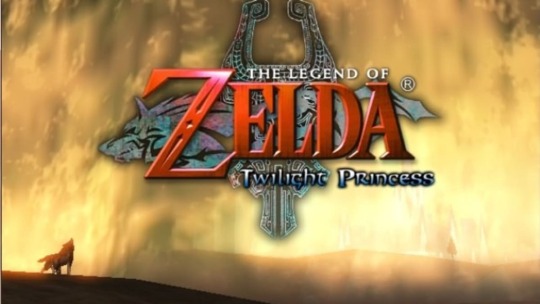
The Legend of Zelda: Twilight Princess is a game that means so much to me I can scarcely put it into words. I was 10 years old when this game came out, the perfect age in my opinion. I think if I had been any older or younger it might have slipped past my radar. Despite the game being rated T for Teen, my parents got it for me and my sister anyway which I think is pretty fucking rad.
Not that we really knew what we were in for, of course. I was just a kid. I didn’t read game reviews yet, and I didn’t have any friends who had played this game so I couldn’t ask them about it either. When we first popped that disc in and were brought to the main menu, we had absolutely NO idea just what kind of ride we were in for or how just how much this game would impact us.
Another thing I’d like to mention was how this game was introduced into my life at the perfect time. My sister and I had just moved schools. We were the new kids, and we had a lot of trouble adjusting and fitting in. There was definitely some teasing, maybe even some bullying. I don’t remember much from those days to be honest. But you know what I do remember? Playing Twilight Princess. This game was the perfect distraction from my crappy school life, and in a time where my sister and I barely had any friends, it was so comforting. We’ve always been close, but I think we bonded a lot over this game.
If you’re a gamer, you know this feeling; the feeling when you are currently playing a game that is just so fun, so amazing, so utterly addicting in the best possible way; that when you’re away from it it’s all you can think about. I distinctly remember my Dad installing the new TV which meant no Twilight Princess for a day or so. I was SO impatient and I just couldn’t wait for him to be done so I could continue playing it.
Even though I’ve now played Twilight Princess so many times that I could basically play it with my eyes closed (maybe lol) I still remember experiencing some of the best moments of the game for the very first time; running around Ordon Village, finding Midna, beating the first dungeon, finding out that GANONDORF was in the game! (Remember I had no way of knowing this at the time). Every big moment, every discovery, every heart-wrenching cut scene, it all felt so real and so important at the time. In a lot of ways, it still is.
Okay, so that’s the personal part. A bit long-winded, I know. I just thought it was important to include for this essay. But what is it about Twilight Princess that makes it so special? Why do I love it so much even after 15 years? (God that makes me feel old). This list isn’t really in a particular order but I will definitely be covering a lot of the BIG reasons why I adore this game so much. Oh, and in case you’re a little late to the party, there will be spoilers. Let’s go!
Darker and More Mature:
There’s something really enticing about being a kid, and witnessing something in a movie, video game, etc. that you know you probably shouldn’t have watched but you did anyway. Not only is Twilight Princess the only Zelda game to date that is Rated T (I’m pretty sure anyway), but it has some seriously dark and disturbing moments throughout the story; including one VERY creepy cut scene about halfway through the game that still haunts me a little to this day. Beyond that, you’ve got painful transformation sequences, characters being stabbed, characters sacrificing themselves, and a scene where I’m pretty sure Ganondorf’s neck just gets fucking broken. I can go on, but the point is this Zelda game does not screw around when it comes to showing intense moments and it’s all the better for it. I never felt the game went too far with it, but let’s say Twilight Princess definitely earned its T rating.
Wolf Form:
I’m sure people who haven’t even played TP know that this is probably the biggest defining feature. In this game, Link gains the ability to turn into a Wolf! I know some people might consider these parts of the game to be boring and not as fun, but I have always disagreed with that notion. I think it’s a really cool and out of the box way to break the somewhat repetitive gameplay of traditional Zelda games. There’s more of a puzzle-solving element to these Wolf sections, and I for one find it very satisfying to collect the Tears of Light. Turning into your Wolf form becomes essential, especially towards the latter half of the game when you need to complete tasks that you couldn’t normally do as a human. Plus…Wolf Link is pretty darn cute! His design is awesome too.
MIDNA!!!:
And speaking of Wolf Link, around the same time Link gains this ability he also meets a character who (in my opinion) is THE BEST Zelda sidekick/companion across all the games. She’s not annoying, she’s not boring; Midna is a 3-Dimensional, fully fleshed out character that plays a crucial role in the story. I can’t imagine anyone playing this game and NOT getting attached to Midna. I know I certainly did. In the first half of the game you don’t really know that much about her, but she is certainly helpful gameplay-wise and doesn’t just give you the same useless hint over and over. Plus, the SASS! My God, Midna is so sassy I love her so much. I love how she grows and changes and becomes a better person by the end of the story. Midna really deserves her own game!
A Beautiful Game:
Now obviously this doesn’t just apply to Twilight Princess. Most Zelda games are very beautiful, especially the more modern ones such as Breath of the Wild. However, there is something about the specific beauty of Twilight Princess that just takes my breath away. The scenery is just gorgeous everywhere you go. Ordon Village is beautiful, Hyrule Field is stunning, Snowpeak is captivating, the Fishing Hole is serene, you get the picture. And to top it all off, Twilight Princess STILL looks beautiful even after all these years. The graphics have aged really well which is certainly no hindrance. As a kid I always wished that some of the locations were real, and honestly, I still kinda do.
Best version of Ganondorf:
It’s funny; I don’t normally root for villains. I tend to gravitate towards more heroic characters or characters that are more similar to me. Ganondorf is certainly the exception; specifically the Ganondorf that we see in Twilight Princess. I remember being SO EXCITED when he first appeared in a cut scene after Arbiter’s Grounds. I don’t know if it’s the way he was introduced, the raspy laugh, or his character design, but I LOVE Ganondorf in this game. He is just so bad-ass, so cool, my only wish is that we saw a little bit more of him in TP. Regardless, every time he shows up in the game, he is a formidable and dominating screen presence. And I feel no shame whatsoever admitting that 10 year old Sam developed a massive crush on this Ganondorf. Is that weird? I dunno, but either way he is just so cool as well as a fantastic addition to an already perfect game.
The Soundtrack:
Again, it’s not unusual for a Zelda game to have a really fantastic soundtrack. The series has always had amazing music since the very first game. However, the music in Twilight Princess continues to entrance me even to this day. The Main Menu theme? Amazing. Midna’s theme? Amazing. Lake Hylia? Amazing. And don’t even get me started on those beautiful Wolf Songs you sing throughout the game. It’s just a beautiful soundtrack. To say it’s nostalgic for me is a massive understatement.
Dungeon Design:
Unsurprisingly, most Zelda games tend to recycle the same temple themes over and over again. You got your forest temple, your fire temple, water, desert, time, etc. These are definitely present in Twilight Princess, but there’s something about the way they’re designed and the way you move through them that just feels so unique and wonderful. I won’t name them but I’ve played other Zelda games where the dungeons felt like a horrible, tedious chore. With TP, I never felt that was the case. Every Dungeon is packed full of secrets, with plenty of interesting set pieces to explore. Even the water temple (YES, the Water Temple!) is enjoyable to play through. The Dungeons have tons of replay value as well, meaning that you can return later and find special items that you weren’t able to access before.
And just as a fun bonus, here’s my top nine list for the Twilight Princess Dungeon’s:
9) City in the Sky
8) Palace of Twilight
7) Hyrule Castle
6) Temple of Time
5) Lakebed Temple
4) Forest Temple
3) Snowpeak Ruins
2) Goron Mines
1) Arbiter’s Grounds
And that about wraps it up, folks! Sorry this was such a long essay, I had so much to say. It is, after all, my favourite video game ever. Of course it’s not technically perfect and it definitely has some flaws. But you know what? It’s perfect to me, and I’ll never get sick of it.
Thank you so much for reading! :) Listen to this track of the opening theme and tell me you don’t feel it in your SOUL!!!
youtube
6 notes
·
View notes
Note
I have a another question about localization since you say all of the FE localizations are good but then there's the localization I hear about of FE fates a localize game that I hear so many Nintendo and FE fans say really bad things about it such as a lot of Mistranslations, Big Script changes, Memes being add in, etc also there was some censorship that got some of them really mad and with some of them saying that it's the wrost localize game of all time is it really that bad as they say?
Whew, this ask has been sitting in my inbox for actual months! Sorry for taking so long to respond! It’s probably unsurprising, but there’s so much to unpack here, and just deciding what to write had me going in circles for a long time.
I’m not entirely satisfied with this answer, but if I tried to discuss everything I have in mind about the Fates localization at once, I’d never be done. So I stuck to 5 topics to give a basic summary. If anyone wants to follow up on one particular issue for more info, or know more about something I didn’t discuss here, please do! I’d love to round out my argument.
First off - a little history just to get our minds situated into the history of localization. Bad localization has always existed, in fact that’s pretty much all we had in the 80’s and somewhat into the 90’s until it became clear that video games were going to become very complex in story and text going forward. Even a surface look into old localizations like this one tells a very long story. We have to remember that “bad” localization is everywhere, and it’s just always going to exist, even now that we have professional teams dedicated to localization, so long as humans aren’t perfect, time crunch is standard in the gaming industry, and we all have our own definition of “good”.
Next, here’s the short answer to the question:
When I say “overall” good, I do stress that pretty heavily, because of course there are plenty of changes that each individual player of the game will have their own take on. The Fire Emblem games simply have so much text in them that even a hundred small mistranslations or changes are just a drop in the bucket.
But I do agree that Fates is one of the worst of the FE localizations, if your terms are in number of changes from the Japanese. Awakening’s is up there too.
Yeah, Awakening’s localization has a lot of questionable moments too. I know this take isn’t a surprise to all fans. But ever since Fates came out, I’ve seen people praising Awakening’s localization, and saying that 8-4 (an outside studio often hired by Nintendo, they localized Awakening) is an amazing localization team and Treehouse (Nintendo’s own team, did Fates) is garbage. TBH… They both did a job that has huge ups and downs. Are people really doomed to always forget the flaws that the previous installment in a series had as soon as something new comes out? Ha ha.
I think it’s common knowledge at this point that localizations are not made for the people who want a more direct-to-the-Japanese version. And that sucks, and the feelings of anger, disappointment, etc. in those who wanted a more direct translation are perfectly valid and entirely understandable.
But we really, really need to understand and accept that localizations are made for the target audience/culture as a whole, and to sell to the most people possible. By getting angry and rejecting the entire game’s script as “total changes,” “butchering,” “changing the games to fit the localization team’s motives,” and all sorts of other toxic nonsense, we miss out on all of the nuance that actually exists. We rob ourselves of the fun that could be had analyzing whether or not the localizers did their job of adapting the game to the target audience, and how they might have done it better. And we can’t notice and appreciate all of the times the team did do a great or good job.
In the vast majority of cases, localizers only want those who play their games and read their scripts to have fun! To imply anything else is just wrong.
What I feel I can do here, to define if “the localization is as bad as they say,” is debunk these “all or nothing” arguments, and show that the changes aren’t usually anywhere near as drastic or simple as people make them sound.
Now let’s goooooo!
I read these two articles to prepare myself to write this, link here, and link here, which I got off a quick Google search. They are from the time of Fates’ release, and report on how a lot of people generally felt back then, so I found them to be good references to put myself back in time with the thoughts people had then.
Character Changes
These often tend to be the biggest topics of conversation. Hisame will be my topic of more detailed discussion today, but I’ll bring other characters up for a hot second too.

I can never stress this enough, but Hisame made pickles in the Japanese. He was always talking about them in the Japanese, too. (Fates loves supports revolving around food in general, really.) I think people generally know this to be true? But I did read some comments saying that the pickle love was totally made up in the localization, you can see the proof above, so I had to point it out.
I don’t think a lot of people who have talked about his character picked up on this - admittedly, I didn’t until someone close to me explained it - but the main gag of Hisame’s character is that he’s young, but already acting like an old man. He lectures his own father on how to behave, etc., and makes pickles. And the “acting like an old man” is not totally lost in translation, with him still acting serious and lecturing his father. But the making pickles trait… I’d never pin that as an “old man” stereotype as a US American. Well, now I would, because I know Japanese culture well enough… but anyway.
And this is where the cultural differences come in. The number of people farming and making traditional foods from scratch is dwindling fast in Japan. In just five years there, I watched countless rice paddies and other small produce fields be turned into houses or apartment buildings. The elderly farmers are becoming too old to care for their crops, and their kids choose to pursue other careers, so the family sells off the farmland. Following along this trend is traditional pickle making. You can just buy them ready to eat in the supermarket, so why make your own? Most people don’t even have the space to be making them if they wanted to. And so, pickle making has come to be seen as something old people do. It fits in with Hisame’s “old man” character perfectly.
But again, as an American, I never would have figured that out without knowledge about Japan. Of course you could argue that the localizers didn’t need to change anything about him. The making pickles was quirky and unique, and would give you a chuckle as is. But there was space to make him funnier, so they did. That is, after all, was what the Japanese intended, for it to be funny. It’s not funny in the same way… but sometimes it’s impossible to be.
And that is what is most important in localization between two wildly different languages like Japanese and English - not retaining the same words, but the same intention or mood. The same words can convey a totally different meaning or mood, or make no sense, because of cultural differences. So localizers need to achieve the same mood, not the same words. I have come to see people understand this much better as the years go on, and the general gaming population becomes more learned about what localization is.
Of course, that’s a pretty simplified way of looking at it. But that’s how I summarize localization as a whole, in an easy way to understand. You might not agree with exactly how the localizers did what they did, but I think we might all be able to agree that they were trying to do their job and had no malicious intent to butcher the Japanese original or something absurd like that.
One more thing that’s relevant to this - Japanese people don’t care about repetition so much. The same character tropes are repeated over and over, the same lines are repeated over and over… In the US, we don’t like that! It’s boring and dull! This cultural difference is a constant struggle in localization. A lot of the people who think they want a direct translation don’t realize that it will be boring to them… So localizations alter and add details and lines here and there to give some more variation. This also helps to explain Hisame’s changes to talk even more about pickles.
And I’ve seen many a comment from people saying they liked Hisame in the localization. They found his exaggerated pickle lines fun, and enjoyed many good laughs. How can we call his new characterization outright bad when it worked for some? When they like it more than a straight Japanese translation? He’s still essentially the same guy… just some of the things he says are different. That’s not much of a change at all.
...And back to that original screenshot I showed. Isn’t Hisame still serious in the localization? His lines are funny, but I’m under the impression that he himself is still dead serious. ...Anyway. That’s about all I have to say about Hisame.
Many characters have changed lines. There’s no disputing that. But something to always question is how far do these changes go? Did the localizers completely change the intent or tone of the original? Or are they playing up certain character traits the characters always had in the Japanese? Or is something else going on?

This is also a prime example of how shallow some articles or “analysis” into the Fates localization are. You can’t look at one line change and make a sweeping conclusion about an entire character. Always be suspect of stuff like this. Kana ALWAYS acted like a little kid. That’s their entire schtick. They are your cute little mama/papa loving kid. That one line may have changed that scene significantly, but Kana’s whole character? No, not at all.
Even Kana’s S support changes aren’t as simple as it seems. They aren’t all changed. The 2nd gen characters that Kana is close in age to retain their romantic endings, such as Midori. Only those considerably older than Kana turned platonic.
And Effie, another character commonly cited as changed? She wasn’t radically changed from some deep character to a one-note workout buff. If only a conclusion could be that easy to reach. Overall, on this specific aspect of Effie, the localization simply added in extra strength or workout jokes when the opportunity arose. Some workout jokes were in the Japanese! She was always an extremely devoted retainer who was always working out and training to get stronger so she could better fulfill her duties.
What is MUCH more interesting in my opinion is the issue of her femininity. In the Japanese, her speech nearly always trailed off with ellipses, and she had feminine voice acting. Whereas in the English, all of that femininity is stripped away with a deep voice, and virtually no ellipses. How refreshing it would have felt in English for Effie to have retained that femininity! Women can bench press trees and be feminine! It would be unique to see a female character like that. ...Or so a US American might think.
But from what I understand, strong female characters in Japanese entertainment are nearly always very feminine. They send a clear message: “You can be whatever you want in private, so long as you still fit the girly-girl mold in public and fulfill society's expectations for you!!” In the Japanese, Effie is fitting their stereotype.
So in one way of looking at it, Effie wasn’t really changed, because in both Japanese and English, she paints a stereotypical and the most socially accepted image of a physically powerful female in each culture. ...That’s an interpretation of mine, anyway. I’m not sure how many people would agree with it.
...See what I mean, that the answer of “changed or unchanged” really isn’t as straightforward as “are the lines translated directly?”
Looking into the deeper details creates a much more interesting picture! You come to paint a picture in your mind, without even thinking about it, of what the localizers intended to do, and you can at least understand what they were thinking. This forms a much more accurate conclusion on whether or not the team achieved a good localization, and whether or not that sacrificed the intent of the original.
So as you can see, few issues are as bad as they’ve been blown up to be. None of the characters are completely different from their Japanese counterparts, or anything so extreme. They were just localized. Whether or not they were localized well, is up to each person’s opinion.
...I do want to write about Soleil, as an example of someone who I think could have been localized better, but I’ll save that for another day. It’s gonna get long. If anyone is interested in seeing this post, just remind me every couple of months or so until I find the time and write it, thanks in advance.
Memes
Since I mentioned Kana’s dragon speak in the last section, this is a perfect time to transition into my feelings about memes, aka context-specific humor. I agree with the most commonly shared opinion: memes don’t belong in localization. Though it’s not just because of a simple “change from the Japanese is bad!!!!” approach. In my opinion, the best localizations will be as timeless as possible. I want my future self and everyone else who will play the game in the years to come to enjoy the game as much as possible.
Memes come in and out of fashion so quickly that they’re almost guaranteed to be out of date by the time they release. And only the most popular of popular stories will be widely-known enough for most everyone to get the reference. Of course, it’s pretty difficult to know what expressions and such people will remember and use 10, 20, or 30 years down the line. Some language you think will be timeless will fall out of style. But using memes and references that are not likely to appeal to as many people as possible… that’s one of the few things I can almost universally call “bad localization.”
Unless, of course, the game was intended in the Japanese to be a product of its time, and used a lot of references. That’s a whole different ball game.
Accurate translation, much less full localization, requires creative thinking to recreate the tone and intent of the original.

Here’s another example that showcases another couple of things I find really important to localization.
Number 1: The writer of the article said “The American localization … gives her silly lines that aren’t in the original.” But does it really “give” her anything new at all? I’d argue not. Tottemo is commonly translated as ‘really’ or something like that… but doesn’t ‘super-dupity’ convey the same meaning as ‘really’? Just because an English word isn’t given as a common definition for a Japanese word, doesn’t mean it can’t be a definition. Sometimes… a word we don’t commonly think of as a translation for the Japanese, can still be a perfectly valid translation. This is not an addition. Just an uncommon translation of the Japanese word.
Number 2: Japanese has a wide range of “I” and “you” pronouns, sentence endings, and other little things that define character age, personality, gender, and more, that simply don’t exist in English. To not use similar features of English when localizers find opportunities to do so, would just take away that sense of nuance the Japanese had in utilizing their language’s own unique features.
Of course it’s one possibility that Sophie uses kiddy words. She’s not a little kid, but she’s still pretty young! To have everyone use the same word choice, because that’s how the words translate into English, is not only inaccurate to how real people talk, but also inaccurate to how the original Japanese was used. Since many equivalents for Japanese word and grammar choice that define personality do not exist in English, the localizers have to use what does exist in English in new places. I think that makes sense, and creates a much closer script to the Japanese than just translating the words.
Again, it’s all about how we look at the lines!
I see a lot of people define “translation” as “one-to-one recreation of the Japanese words.” To reinforce what I said in the first section, I do not think this is true. To me, translating is recreating the same tone, mood, meaning, and message of the original. You CANNOT achieve that just by translating the words and grammar alone.
Different words conveying the same overall meaning.

This section is really just a continuation of the previous one. But reinforcing central arguments over and over again is the core of good essay writing.
So this is one of my strategies for deciding whether or not a script is a good or bad translation/localization: “Does the script convey the same basic meaning?” (or tone, etc.)
Changes, adding detail to what the Japanese said, and “playing-up,” are all wildly different things.
So first, I break down the bit of dialogue into as few words as possible.
-Nohr royals inherit dragon blood.
-So they have superhuman power.
...And then I look to see if the localization conveyed that same basic meaning. Which, in this case, I think it did. Your mileage may vary, but I think I’ve made my point at least.
I wanted this scene to be one of the five I addressed because I think it exemplifies yet another of the fascinating differences between Japanese and English. Japanese is a language that likes to be vague, and leave out context that is already established. Speech can seem super boring as few characters say anything unique. (At least… that’s how us English speakers see it! Japanese people think they are just being normal, and not vague or boring at all!) ...English, not so much. So much as leaving out the subject of the sentence is chastised as incorrect grammar. And we like unique dialogue and prose more than most other languages.
I saw one person in the comments of the article I got this visual from argue that the tone is totally different, that the Japanese was more of a history lesson, but the localization is trying to pump Corrin and Leo up for battle, but… eh, I just don’t see it. The English also just feels like he is describing the powers of their bloodline to me. Again, that’s why this is so complex and fascinating, because everyone has their own viewpoints they are coming from.
The “direct translation” and “localization” reach the same message. This isn’t a big change in my opinion at all.
Sometimes mistakes happen...

These interpretations of Saizo and Beruka’s C Support have always boggled my mind. Coming up with all these explanations as to why the omission was done on purpose to completely erase the support when… it just seems… obvious to me… that the localization team never wrote or programmed a translation and shipped the game with the placeholder?
After all, if the localization team felt they had to remove or change content that might be questionable for the target audience, wouldn’t they alter or rewrite the conversation, like they have with Soleil’s supports, for example? This very game has multiple examples of proof that the localizers will rewrite entire chunks of script if they feel it makes the scene better fit what the target audience be more comfortable with.
Mistakes happen. That’s all I think Saizo and Beruka’s C Support is. We probably never got an update just because Nintendo doesn’t have a track record of being the best with those.
Of course, I may be wrong. Nintendo and Treehouse keep pretty much all of their processes a secret. But I never, ever would have imagined on my own that Saizo and Beruka’s support was omitted on purpose. Citing this as a reason why we need to be up in arms about bad localization is so absurd to me.
Mistakes happen. It’s not like the Japanese creators didn’t have embarrassing moments with underdeveloped content in this game either… they didn’t even name the continent in this game!
Sometimes, “bad” localization is just human error. It’s something we can’t eliminate entirely, and will just have to accept.
Final thoughts:
I realize that this analysis, for as long as it is, is very short, and still leaves out so much that could be talked about.
But what I hope that it did was not really help convince readers that the Fates localization is actually good, exactly… but helped to create some more balance in how we look at the Fates localization and localizations as a whole. All localization changes have a reason and nuance to how they ended up happening, and it’s important to be thinking from that perspective when we discuss them!
Since I know I may have created more questions than answers, again, feel free to keep the conversation going through more asks! I’ll answer them in time!
#fire emblem#fe#fe14#fates#fe fates#nintendo#2ds#3ds#nintendo 2ds#nintendo 3ds#japan#japanese#translation#localization
14 notes
·
View notes
Text
Review: Death Wind by Tara Grayce
Essie should be planning her happily ever after, not planning a war.
Although they once were enemies, the humans of Escarland and the elves of Tarenhiel have allied to fight the trolls from the far north. But alliances are tricky things even in the best of times, and with Farrendel, the elves’ foremost warrior and Essie’s husband, captured by the trolls, the circumstances appear dire indeed.
But Essie won’t give up, and she will make her two peoples work together to fight this war if it’s the last thing she does. One way or another, she will get Farrendel back, no matter what it takes.
Gonna be honest, didn't expect much given my lukewarm reaction to the previous two books, but this one? This one actually held my attention for genuine reasons rather than just being a light read. Because the plot involves a lot of conflict (arguably the biggest conflict possible, war), the pacing is steady, and two of the three POV characters are mostly suffering and/or being tortured, there's actually tension for once. It's a welcome change, and proves that the author is very much capable of writing it but just chooses not to in favor of boring and conflict-free family interactions.
With Melantha introduced as a POV character, we're offered a pretty buckwild concept for this series: a character that makes mistakes and has to live with the consequences. I actually found myself liking Melantha, not because I thought she was a compelling character (she wasn't) or because I felt bad for her (I didn't), but because she had what Essie didn't: flaws. There's even a point in the book where Melantha thinks about how much she dislikes Essie because Essie is so sugary perfect and everything Melantha wishes she could be, and I think it's supposed to show us how bitter and insecure Melantha is? Except she's 100% correct, Essie is literally too perfect to be a real person and I just sat there going "yeah, you're right, and don't feel bad for being shitty because literally nobody can actually be like Essie."
However, Melantha suffers from Stupid Bitch Syndrome, which doesn't exactly make for a good protagonist/POV character. She's not intended to be dumb, the book expects us to think she was simply misguided and bitter and not, like, a complete idiot who should've known better. But her instant remorse feels less like character development and more like her suddenly realizing she’s actually a huge idiot who fell for the enemy’s nonsense, which she is. She's supposed to be an older elf, a grown woman, yet she makes such an obvious mistake and immediately regrets it and folds like a wet blanket the moment shit hits the fan. It's honestly a bit pathetic. The only reason I preferred her over Essie was because she introduced some much-needed depth to the character roster, but that depth was still about the size of a teacup, compared to Farrendel's thimble and Essie's singular water molecule. Her relationship with the troll prince was actually ... interesting? It was all mostly unspoken, which I think made it stronger than the overly telegraphed thing Essie and Farrendel have going on, and I’m sure it’ll be flattened out and become boring in the next book, so enjoy this potential before it’s wasted.
Farrendel spends the entire book being tortured and thinking about how he's being tortured. I can't blame him, but it doesn't make for good reading. I honestly think his POV could've been left out altogether and it wouldn't have changed much. Melantha is already there with him letting the reader know he’s suffering, we don’t need two POVs telling us the same thing. Oh uh, except for the part where he ... puts his magic in a soul-bond pocket. I'd mark this as spoilers but it's literally on the cover. I guess if his POV was removed then we'd never know how Essie learned to blast his power in battle at that one convenient moment, but it barely affects the plot afterward so um, yeah. I'm having a hard time justifying his POV at all. I'm still not over that part btw, how Farrendel just ... makes a "mental fist" (no, really), grabs his magic in one and his soul bond with Essie in the other and just puts them together like he's connecting two cables to an adapter. And he knew to do this ... how? It's not like we've seen him experiment with his magic before, in fact he's been shown to hate it and only use it when necessary, but apparently this tortured and exhausted man has the presence of mind to try something as vague and theoretical as ... putting his magic in a soul pocket. He spends a few pages going “I wonder if I can do this” and then it works on the first try. He does consider whether it’ll hurt Essie and decides not to try it, but as I said, he does it soon after anyway so like ... I don’t think it’s supposed to be funny or show how little of a shit he gives about Essie, but that’s sort of the implication and I thought it was funny as hell.
Anyway, the magic pocket is about as much worldbuilding/lore as we get from this series entry, aside from the trolls having their own political intricacies and tensions, which I’m assuming the next book will expand upon. The writing itself in this book was pretty bad at times. The repetition of certain words and names was really glaring in some parts and felt amateurish. Take a shot every time the word “magic” appears and you’ll be in the grave before the book ends. Prince Rharreth and King Charvod are almost always referred to with their full titles and names for some reason? A few editing rounds would’ve helped this a lot, methinks.
The plot is mostly moved along in Essie’s POV, which is slightly less insufferable than usual because she’s the one observing the movement of the two armies and there are actually action scenes in there that, while don’t exactly made me worried about her (there’s no way this perfect idiot will ever die), still provided some tension. But it’s honestly not much, the “war” lasted two entire weeks (and that’s including the strategy, logistics, and mobilizing) and with how fast the armies travel and how little resistance they face (and how Deus Ex Farrendel-d the final battle was, the guy is apparently full of godlike destructive power despite being starved and tortured, go off king), it all felt very unrealistic and easy. Like, we have two armies marching in the middle of a mountain chain during magical snow storms, all while being regularly assaulted by the defending army, and they still get there no problem, without a single mention of soldiers struggling not to die of exposure. Aight. I guess these elves and humans are just very resistant to the cold, for some reason.
I have a sneaking suspicion that the reason it goes over so fast in-universe is because the author wanted Farrendel to be horribly tortured throughout his captivity, but also knew that if that lasts too long, the damage will be too severe to easily resolve in the next book. But instead of easing off the hardcore torture, because then we’d lose out on that drama and those High Stakes, she decided to speed up the whole war thing, because hey, who cares about that, anyway? We just want Farrendel back, right? Riiiight? Better hurry up guys! Don’t want Farrendel to be too tortured to fix with some strawberry-flavored medicine and vague counseling in the next book!
So yeah, the plot moves on speedily, but at what cost? Mainly depth. Again. And once again, Essie suffers the most from being a bland caricature of a person and dragging the whole thing down. The author’s GR bio says she writes “spunky and tough” leading ladies, and I guess having no other things in your brain except sparkly kitten gifs is a certain kind of toughness in an “immovable object” sort of way, but “spunk” implies a of counter-culture edge that sweet widdle Essie simply does not have.
There was one small section where Essie felt bad over how the human and elven warriors were going to die, how many mothers and sisters and daughters would suffer just so she didn’t have to, but then we don’t find out the death count, the casualties are never even mentioned, and Essie moves on from this without even a single thought questioning the morality of a monarchy or her own position of power. Now, I get that that’s not the focus of this series, but it just adds to how Essie’s worries are always surface-level and never justified by the plot, how she never has to do any introspection and is never allowed to not always be annoyingly positive. Whenever she even begins to think something negative, she instantly, almost compulsively changes trajectory and just decides not to worry about it, and then it never comes up again anyway. This would’ve been like, an interesting take on toxic positivity and how Essie represses her own emotions, but no, the book never goes there, she’s just that perfect and wee and optimistic, even during a war and when her husband’s being tortured to near-death. It’s kind of insulting to read, honestly.
Oh yeah, that’s another thing that annoyed me. Even when she loses Farrendel, she takes it surprisingly well and focuses mostly on keeping a positive attitude for his sake, so he doesn’t feel her sadness through their “heart bond.” I never really felt her loss, her love for him, when she so easily could just decide not to feel bad “for his sake.” I want her to feel bad, I want her to miss him and to ache at his absence and to fear for what they’re doing to him. But no. That would just upset him more and hurt him more. So Essie doesn’t get to experience any negative feelings because it might upset her husband. Essie doesn’t get angry and determined to fight, she just keeps being her cheery little Stepford Wife self because being nice will keep everyone’s spirits up and make them hope and fight harder to preserve that hope!! :)
It just comes off as really flat and moralistic yet dishonest at the same time, because nobody would fucking react like this IRL. Essie might be a good person in-universe, but she drags the entire series down just by being perfect, cheery, and never, ever challenged or even allowed to challenge anything herself. Essie isn’t allowed to have any negative feelings because it might affect her husband, and yet we’re supposed to find this empowering somehow? We’re supposed to believe she’s spunky and confident and a sweet little firecracker of a redhead?
Eugh.
At least Melantha is an idiot, I guess. One whole female character gets to have a flaw, and she’s the almost-villain who needs to be fixed with love.
Idk man. The sexism in this series is like a constant undercurrent that grows stronger with each installment as our “understanding” of this world expands. All of Essie’s brothers, including the king, are at the front lines because they are manly men “have to” be there, while the women who aren’t Essie or Jalissa stay behind to be mothers and caretakers. It’s never expanded upon and just sort of accepted as part of both human and elven society and the narrative treats it like this obvious thing that even Essie doesn’t really bother noting how unfair and/or weird it is. There’s not even a single comment on it. Essie is in the war not because she can fight but because Farrendel needs her, and Jalissa is there because ... Um. Because ... she. Uh. She needs to be there when they confront Melantha? She’s Farrendel’s sister? Idk. Jalissa’s main point in this series so far seems to be the ship tease between her and Edmund that feels awkward and one-sided as fuck.
So yeah. The pacing and plot flowed along really well, but the characters and the writing and worldbuilding are all just really undercooked, which, at three books into the series, feels more glaring than ever.
But hey, at least it was a quick read!
1 note
·
View note
Text
A Court of Silver Flames by Sarah J. Maas - blurrypetals review
originally posted feb. 22, 2021 - ★☆☆☆☆
This is not Sarah J. Maas's worst book, not by a long shot, but it is definitely her least fun, most unnecessary effort, and we're talking about an author who also wrote Tower of Dawn and A Court of Frost and Starlight.
I have a terrible, sordid history with Maas. I started off as a fan of Throne of Glass who was then spurned for being a fan of the story and characters she started with and, ever since then, I have never been able to view her as anything more than an amateur stumbling her way through high fantasy concepts, leaving nothing but wreckage in her wake. I really hate what Throne of Glass became and consider it to be a pretty perfect What Not To Do guide as far as writing diverse yet consistent characters, writing a satisfying, sweeping narrative, and many, many other things.
This series, however, seemed at first to be a strange outlier. The first three books might be overlong, trite, and have a lot of the same issues with diversity and tryhard feminism as Throne of Glass, but at the very least, they are fun. Despite all their flaws, and despite how much shit I enjoy talking about Sarah J. Maas, the first three books are an okay guilty pleasure. I think they are disgustingly overrated and too many copycats are trying to emulate it, but they're...fine. I think the novella is unnecessary and weird, but it's mostly just fanservice that seemed to wrap up Feyre and Rhysand's story, so even if I didn't like it, it at least was short and fluffy for the most part.
I think there were a lot of critical mistakes made with this book, which is a shocker considering just how definitely totally competent our author is! But seriously, past the fact that this book exists at all, the biggest mistake Maas made was putting it in the third person. I think the biggest strength of the original three books was that we were in Feyre's head, experiencing things right alongside her. One nice trick of the first person perspective is that there's a sort of built-in empathy that's sort of difficult to fuck up and it really helped sell Feyre's journey. Here, we are not necessarily far from Nesta and Cassian's heads, so it genuinely confounds me that Maas decided to change that. Why not have an alternating first person POV between the two? I just don't understand.
But let's get into the meat of things. What do I mean when I say this book feels unnecessary? Well, not only does it feel a bit like we're picking open a story that felt like it wrapped up pretty nicely, but everything new that does happen feels like a foregone conclusion.
It was pretty readily clear from the middle of A Court of Wings and Ruin, perhaps earlier, that Nesta and Cassian are mates. I personally have never been a fan of the whole fated mates thing in this stuff, since it sucks out any semblance of romantic tension out of things, and while I never expect Maas to do the interesting or unexpected thing, it would have been nice to have maybe one couple get together who just got together despite not being mates.
That said, it isn't as if the romance would have been made better by that. These two have a little bit of chemistry that isn't so bad, but it's overshadowed by their near constant and frustratingly repetitive fucking. It's actually insane how much unsexy sex is in this book. I mean, there's something to be said for Maas finally ditching the idea that she is at all trying to write for younger readers, but at what cost?
Another plot point that carries a lot of the so-called tension in the novel is that of Feyre's pregnancy with her and Rhysand's son, the truly poorly named Nyx. Everyone is certain Feyre is going to die because the baby has wings and her vag is not prepared for it (I wish I was kidding) but this is another thing that feels like a foregone conclusion on arrival because A, we know Sarah J. Maas doesn't have the fucking guts to kill anyone off, let alone her precious Feyre and definitely not Rhys, who also dies if Feyre dies, and B, we already know that their son is going to be okay because of all the business with the Bone Carver.
And, other than some business with a crown, a mask, and a harp, the rest of the plot centers around Nesta recovering from her PTSD. I'll begrudgingly admit, her PTSD is actually not poorly written. That said, it is very poorly handled. In the original trilogy, Rhys is upheld as this extremely kind and generous and wonderful dude who helps the broken, has trauma of his own to reckon with, and in this book, he is a fucking cunt. It is legitimately, truly shocking how disgusting and awful he is to Nesta. Yet again, we experience Sarah J. Maas's brand of so-called character development by way of performing a personality transplant that serves the half-assed plot rather than the established character. Now, where have I seen that before? Aelin? Tamlin? Chaol? Nah, can't be.
Rhysand isn't the only one who treats Nesta terribly, though, it's the entire inner circle, even her fated mate, of course! The way they all treat this grieving, traumatized, abused woman is utterly sickening, and they all are treated as if they're in the right for it! It's absolutely nuts. Even though I've never cared for Nesta as a character, no one and I mean no one deserves to be treated the way Amren, Rhysand, Mor, and the rest all treat Nesta in this book.
I've said this many times before, but I'll repeat what I said in my review for the last Sarah J. Maas book I read, Kingdom of Ash and it's this: Sometimes it is better to be spectacularly, hilariously awful than it is to be utterly boring and leave your reader feeling indifferent and, while this one did make me angry at points, I was mostly just bored and tired. Apathy is the worst feeling you can leave a reader with and this is not the first time Sarah J. Maas has done this to me.
I know a lot of people think Sarah J. Maas hung the moon, but I am just so tired, I just do not get it. I once understood what made her books fun, but when she shits out trite excuses for romance and fantasy such as this, I can't understand why anyone could enjoy such a mediocre example of thinly veiled porn as this. Do us all a favor, Sarah, and do better. It's just sad at this point.
#a court of silver flames#a court of thorns and roses#sarah j. maas#2021#goodreads mirror#blurrypetals
2 notes
·
View notes
Text
Kingdom Hearts: Birth by Sleep (PSP)
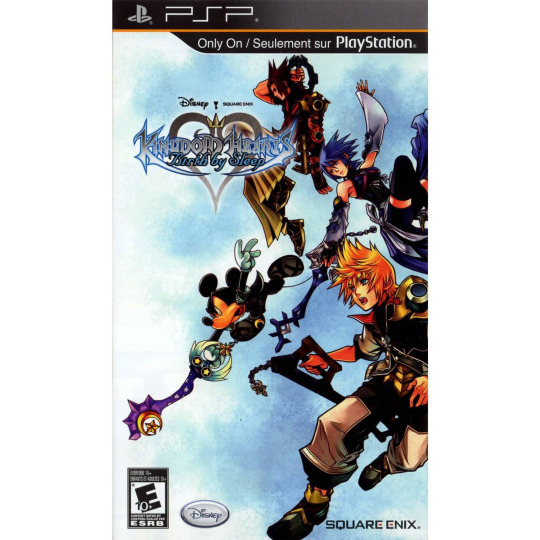
youtube
I must admit, as annoying as it is that so many Kingdom Hearts games exist that seem to do nothing but muddle an already needlessly convoluted mythology, most of the little spin offs I’ve played, I actually quite enjoyed. I loved Chain of Memories card-based battle system, even while I somewhat loathed the incredibly redundant story. With Birth by Sleep, it also adds an interesting twist to the combat, while introducing a new feature to the KH series: the option to play as three separate characters, whose respective stories cross-over and intertwine with each other.
Kingdom Hearts: Birth by Sleep, released for the PSP in 2010, before being remade for the Kingdom Hearts HD 2.5 Remix for the Playstations 3 & 4. The game is set 10 years before the first Kingdom Hearts game and centers around three hopeful Keyblade wielder candidates named Terra, Aqua, and Ventus. Incidentally their names correspond to the elements they specialize in, such as earth for Terra, water for Aqua, and large overpriced coffee for Ventus! Rimshot!

Anyway, the game begins during their final trials, which Terra fails spectacularly when he is unable to control the powers of darkness in his heart. This sets off a chain of events that send the three traveling separately to different worlds, while the evil Xehanort (in his original form before he becomes a Heartless and voiced by the late, great Leonard Nimoy) manipulates events from behind the scenes. As Terra continues to spiral into the dark side, his pal Ventus goes rogue and follows his friend around the universe to help pull him back into the light, while Aqua (who passed the trial with flying colors) discreetly keeps tabs on them both on behalf of their master Eraqus (voiced by Mark Hamill!).
Well, it wouldn’t be a Kingdom Hearts game without a ridiculously complicated plot! I won’t even go into Ventus being the “key” (rimshot again) to forging something called a “Xi-Blade” or the mysterious masked boy named Vanitas who stalks all three characters during their respective campaigns like Protoman in Megaman 3. All complaints about the story aside, I did enjoy certain aspects, such as how certain incidents from the perspective of the other characters make it seem like Terra is giving in to the darkness, but when you play as Terra you realize it’s all a misunderstanding and that Terra is being used. So the mild “Rashomon” like elements of the story are interesting, albeit not quite developed enough. Also, that these characters are basically carbon copies of Sora, Rikku, and Kairi is kind of lame and unoriginal.
Whatever flaws the story may have, at least the gameplay is solid, and that’s all that matters to me. Birth by Sleep plays like every other KH game, with the exception that you don’t have party members for support. I’m going to be honest - the metric fuck ton of options and nuances to the combat mechanice was overwhelming at first. First you have the “Command Deck”, which works similarly to the card system from Chain of Memories, where you can rotate through a collection of Keyblade techniques, spells, and items that you load up via the menu before entering combat. Also these spells and techniques can be “melded” in the main menu to create new, more powerful spells and techs, which if melded with a particular type of gem, can also grant you a permanent “ability”, such as “treasure magnet”, “air combo plus”, “Once Again”, etc.
Confused? I’m not done yet!
You can also shift to other “Command Decks” during battles depending on what types of spells or techniques that you use. For example, if you use a fire spell, you’ll shift to a fire-based attack style that will eventually end with a fire finisher attack. That not enough for you? Well, you also have available something called D-Links (not THAT “D”, ya filthy animals), which are command decks based on characters you meet along the way. Say you run into Micky Mouse during the story campaign - you’ll forge a D-Link with him and, provided the D-Link meter is full, you can shift into “Micky Mouse” mode, which contains a different move set and finisher.
Personally, I never found these D-links to be particularly useful except as a way to quickly refill my HP. Otherwise, they are actually quite bothersome, because many of them don’t have cure spells, so if you get low on HP while in D-link mode, ya better revert back to your command deck or you’re screwed, and many of the more difficult battles later in the game are way, WAY too fast paced for that kind of shit.
Got a bunch of spells and techniques that you need to upgrade to their maximum level pronto without level grinding? You have the option of playing something called the “Command Board”, which is Kingdom Hearts version of Mario Party but without those pesky minigames that make Mario Party fun. I rolled my eyes at using the Command Board at first, but I won’t lie - i actually grew to rather enjoy it and it is a nice way to upgrade a ton of abilities without the monotony of grinding.
Speaking of monotony, though, I would say Birth by Sleep’s biggest flaw is how repetitive it feels essentially playing through the game three times as each character. They all visit the same worlds, albeit with access to different points of each world’s map. Each character plays very differently, with Terra being the slow-moving, lumbering oaf but with great strength and stamina; Ventus being the best of both worlds, as he his fairly quick and moderately strong; and Aqua being the weaker of the two, but fast as hell and with incredibly strong magic. As a matter of fact, once you get Aqua all buffed up with her abilities, and a decent keyblade, she becomes quite the ass kicker over the two boys in my humble opinion. Thankfully, each character’s story campaign is fairly short, which takes the edge off the repetitiveness a bit. After playing through each character, there is a “Final Episode” that unlocks, provided you preserved each character’s post-game file, that wraps up the story... or wraps it up as best as one can expect any Kingdom Hearts game to wrap up.
As a console game, Birth by Sleep is decent, but lets remember this was meant to be on a portable system! So in that context, especially on a console like the PSP, Birth by Sleep goes from “decent” to “excellent”, as it provides just enough RPG action to occupy one’s time while on the go, but without being so much of a time sink that you’re rooted in one spot forever and miss your flight or doctor’s appointment or whatever it is you’ve brought the PSP to kill time at back in 2010. I will forewarn completionists out there though: this game is a goddamn nightmare to 100%. Because of the way it is set up, you have to basically one hundred percent the game THREE TIMES, and beat the game at least once on “Critical Mode” if you didn’t already do so in one of those three slots. That means playing through every mini-game, every arena battle, and beating every optional boss (who are insanely difficult, true to KH tradition) THREE TIMES. It’s very tedious and it sucks. As of this writing, I have 100-percented Aqua, and am currently working on finishing up with Ven and Terra. May God have mercy on my soul.
#kingdom hearts#birth by sleep#disney#sony#square enix#ventus#terra#aqua#keyblade#mickey mouse#rpg#action#role playing game#psp#playstation
4 notes
·
View notes
Text
A Re-evaluation of Laurel Lance: Season 2

Intro
Season 2 actually gives Laurel her own arc. The first time I watched the show, I HATED Laurel this season, and found her insufferable. But over subsequent re-watches, I found myself not hating this Laurel, and was even sometimes emotionally moved by some of her scenes.
For the first time in the series, Laurel has her own arc! She drives plots! She is a character who stands on her own (kind of), separate from Oliver and Lance! For the first time, she also has flaws, and makes mistakes. For her character, the season is about her downward spiral and then her recovery--a clear arc that is only about her. Now, a lot of her story doesn’t work, but hey, at least there is a “her story.”
Falling From The Pedestal
The Laurel of this season is very different from the Laurel of season 1. Season 1 Laurel was on a pedestal, and Season 2 Laurel fell off it hard. I wonder if that’s why I, and many other fans, hated Laurel so much in season 2. The higher you are, the harder you fall. And in season 1, Laurel was perfect, and had a penchant for self-righteousness. Even the slightest mistake or unlikable characteristic could cause her to face harsher judgement and criticism because of how high up Season 1 held Laurel. Laurel does make a lot of mistakes this season, but watching it, I at least found her to be human, which is more than I can say for her in Season 1.
Still, the writing for Laurel’s character this season is not great; I still wouldn’t say she is a well-written character. Her character is too often isolated from everything else, and her episode storylines are often repetitive. BUT, this season’s Laurel is worlds better than the Laurel of season 1. She is finally more than a love interest; she has flaws, has arcs that are about her. This is VERY basic stuff, and just having them does not make her a well-written character, but it is more than she had last season.
Oliver and Laurel’s Relationship
Perhaps, Laurel’s character is is better this season because her romantic relationship with Oliver is over. Between Seasons 1 and 2, it seems like the writers decided (rightly in my opinion) that they didn’t work together. In the very first episode of the season, they both agree that they can’t be together. And while, it doesn’t become clear to the viewers until the end of the Season that they are definitively over and are likely never getting back together--and we certainly see the fact that they had feelings for each other and see them try to navigate their new friendship in light of that--it seems that the writers knew that they were over and knew that they have to give Laurel more of a character separate from Oliver if they wanted to keep her on the show. The season is better for her character because she is actually allowed to her own character rather than just a love interest.
Flaws & her own Arcs
Finally, a flaw emerges in her character in the first episode. She is misplacing blame. In the first few episodes, she blames the Arrow for Tommy’s death, not wanting to deal with her own feelings of guilt. It may not be rational, but it is at least a flaw, as irritable as it is. And her refusal to admit this scapegoating for a few episodes, even when Lance calls her out on it is another flaw. And over the first few episodes, it is clear that she is desperate to escape that guilt. Laurel’s antagonism to the Arrow is at least different from the pure, perfect girlfriend she was in season 1. While it it frustrating to see her irrationally place blame on The Arrow, at least it shows she has flaws. And the show is smart not too overstay it’s welcome with this dynamic; it only lasts about about three episodes.
In “Broken Dolls,” Laurel admits her guilt about Tommy’s death to Lance; Oliver told her to stay out of the Glades, and she didn’t listen, resulting in Tommy dying to save her. Even if her blaming the Arrow still breeds disbelief, this scene is actually pretty affecting and emotional. And for the first time in the series, Laurel feels human. And it it all about her, her feelings, and her trauma. The show is acknowledging it and taking it seriously for the first time.
Laurel also an addiction storyline, her biggest of the season. This story is kind hit and miss for me. It gets very repetitive, and it goes on for a long time with too little to say. The plot also leaves her isolated from the other characters and often the main plot, which does no favors for her character. But it is nice that they are making her character messy and flawed. It brings her down to earth and makes her more human. In exploring her addiction, it gives her even more flaws, as she refuses to admit she has a problem, rebuffs Oliver and Lance’s attempts to help, and is cruel to people she cares about. In her scenes with Oliver and Lance, for the first time ever, it feels like they are a part of her story, rather than just her only being a part of theirs like in season 1. Her substance issues is about a season long arc, which she didn’t have in season one. At times her substance abuse issues makes her unlikable. She is petulant, rude selfish, and seems to feel like she has a monopoly on pain and suffering. But taken on it’s own, it makes her human, and the show is actually exploring her struggles, inner thoughts, and conflict. But, when taken with Season 1 Laurel, is when this arc really becomes an issue. Because in Season 1, Laurel barely had a personality. So she goes from almost having no personality to having an unlikable one. And there isn’t much in between these two characterizations to make the viewer care about Laurel. So when she does become unlikable, its harder to take and harder to empathize with it would have been if they had done a better job building her character in season 1.
The season generally shows Laurel’s side of things in her addiction storyline, and offers her empathy and understanding. The one time it struggles to do so is the Lance family dinner with Oliver, where it frames Laurel as completely in the wrong. She is mostly in the wrong, and Oliver is right when he accuses of her blaming everyone but herself, and being self-centered in her pain, ignoring the pain and struggles of others. But Laurel is right to be mad at Oliver and Sara. Oliver should have never had come to that dinner. Even if he and Sara were not together, he should not have come. Even if Sara and Oliver thought that Laurel wouldn’t realize that they are together, he still should not have come. It was callous and thoughtless. And Laurel is absolutely entitled to feel upset that they are together, especially since, in her mind, Sara’s only been back a week. Imagine how shitty that would feel. And I think the show is wrong in invalidating these feelings, and not framing Oliver and Sara’s decision to have him come as insensitive, thoughtless, and wrong.
Separated from Main Plot
One of the main problems with Laurel’s addiction storyline is that it is so separated from the main plot of the season, and often, the main plot of the episodes that it is in. Because of this, her character and storyline can sometimes seem like an afterthought or like it’s tertiary to everything else. And in the context of the episodes, these scenes seem to drag because they have so little to do with the main plot, which is given more way more importance. And the difference in level of importance of the main plots and Laurels addiction storyline is keenly felt. As the AV Club states, “The problem is that Laurel’s storyline is now once again isolated from what’s going on with the Arrow; she has given up her vendetta, but that just means she gets to drink and drive away from the main action,” and “[the episode] very consciously isolates her from the main storyline, which effectively makes her a distraction from more interesting things going on elsewhere; even when Oliver finds Al-Owal’s knife in Laurel’s wall, he basically just tells her to sit the rest of the episode out.”
Laurel is also separated from the main action by rarely ever knowing anything, a problem that was also in the first season. As The AV Club stated, “Arrow can instantly make a character appear powerful by giving her knowledge and, alternatively, it can make a character appear weak by leaving her in the dark about all that is unfolding around her. Those respective descriptions apply to Sara and Laurel pretty much perfectly.” Laurel’s lack of knowledge for most of the season makes her passive and reactive, just being placed in events that she doesn’t understand. It’s also a sexist trope to keep secrets from women “for their own good,” and because “they can’t handle it.”
Laurel and Sara relationship
Laurel’s relationship with Sara is her best one in the series. It is the most complex, and effectively emotional one. It is also the only female relationship Laurel has with anyone at this point in the series. Laurel’s feelings toward Sara are complex and justified. After Sara’s death, she had to deal with both anger towards Sara and grief. That is hard to deal with--being angry at someone who’s died. One feeling doesn’t make the other go away. These feelings are hard to wrestle with, and while I don’t think the show does the best job of exploring it, the show does try and does acknowledge it.
Some of Earth 1 Laurel’s best moments in the entire show come from her relationship with Sara. For instance, in “Time of Death,” after the big blow-up at the Lance family dinner, Laurel comes to Verdant. She first sees Oliver, but tells him that she is not here for him, she’s here for Sara. It is her first priority to reconcile with Sara. Sara is the one who is more important to Laurel The show, and her character, are prioritizing her relationship with Sara over her relationship with Oliver. In reconciling with Sara, Laurel explains how Sara’s death has affected her; that she feels she went on the boat with Sara too, and that she has been slowly drowning since. While this is not the best written scene, it feels like the first time the show really dealt with the trauma Laurel experienced losing Sara (and Oliver, to an extent). In the first season, it seemed like she was mostly fine, a little sad and a little angry, but fine. Sara’s death and Sara and Oliver’s affair was just a complication in and obstacle to Laurel and Oliver’s relationship; it was not really used much to explore Laurel’s characters and her feelings.
A few other great moments come in “Birds of Prey.” Laurel goes to drink again but The Black Canary (who Laurel doesn’t know is Sara) convinces her not too. Later, Sara wants to leave with Laurel, leaving the hostages behind. But Laurel refuses, wanting to show that Black Canary and herself that she can be strong. This is a great, strong character moment for Laurel. It is her doing good and putting herself in danger for her own character and her own arc, rather than in service of other characters, although it does serve as conflict for Sara and Oliver, it still feels like its a lot about Laurel. Later, similar to how Sara convinced Laurel not to drink, Laurel convinces the Black Canary not to kill Helena. Laurel was able to get through to Sara when Oliver was unable to. In the final episodes of the season, it is Laurel, not Oliver, who convinces Sara to be a hero.
Less Screen Time & Reverting back
However, disappointingly, Laurel reverts back to her season 1 role in the last few episodes of Season 2. Oliver is prepared to turn himself over to Slade to die. But it is Laurel, kinda, who talks him out of it. She doesn’t really get through to him, as what actually gets through to him is the revelation about Sebastian Blood that she tells him. But before she tells him that, Laurel tries to convince him on other merits not to turn himself in to die. This is also the moment when Laurel reveals that she knows that Oliver is the Arrow. However, this important moment, is eclipsed by Laurel propping Oliver up. This confrontation should be a big moment, both for the show, and especially for Laurel’s character. Instead, it falls on the season 1 line that Laurel knows Oliver to his bones, even in light of this huge secret. It just feels so false, and brushes over any feelings Laurel should have about finding out Oliver is the Arrow. This is all about Oliver, a little bit about Oliver and Laurel, and not about Laurel at all. Laurel confronting Oliver about his identity should have been about her, but instead its about her supporting Oliver and getting him to take action, and not even through her words or something special about her, but through a piece of information she delivers.
And in the season finale, she is kidnapped in order to get to Oliver. And... that is all that she does. Again, she does nothing in the season finale, similar to Season 1 finale. Its frustrating that she is again reduced to someone who needs to be saved, to someone who’s is kidnapped and put in danger to get to Oliver. Especially, as this season has treated her character better than it did in season 1. And Laurel is not even an active part of taking Slade down, not like Felicity, who is also kidnapped but is brave and instrumental in taking Slade down, in numerous ways.
Laurel also has a bunch of undeveloped threads. When Laurel is kidnapped by The Mask, she ends up shooting and killing The Mask in order to save The Arrow’s life. The fact that Laurel killed someone is never addressed. Yes, it was justified and in defense of another person, but still, you’d think Laurel would have some emotional reaction or some feelings about it. But it is never shown or addressed. She also never reckons with the discovery that Oliver killed people. We see her spend a whole episode reckoning and coming to terms with the fact that Oliver is the Arrow, but not that he killed people. You would think that would be a big deal. This is someone who she has known for so long and has been in love with, so finding out that he was killed people, especially since Season 1 Laurel was the “morality” of the show, should have been a big deal. Yes, she worked with The Hood when he was killing people. But her feelings about The Hood have always been inconsistent, with her attitude towards what he does going back and forth. Even if she is okay with The Hood/The Arrow killing people, its got to be different when its someone she knows. It’s got to change how Laurel sees Oliver, even if not necessarily in a bad way. By not addressing this, the show really undercut Laurel’s character.
Laurel has less screen time and narrative prominence this season.There are multiple episodes that Laurel’s not in this season, and others in which she is barely in. This is the transition season for her character from female lead to supporting character. She is still arguably the female lead in this season, but her decreased screentime shows that she is on her way out in this role, and that she is transitioning to a supporting player, which definitively happens in season 3 .
12 notes
·
View notes
Text
Star Wars Battlefront II: A New Hope. A Gamers Review.
The Star Wars Battlefront franchise established its name in the early 2000s when the games were released for the Xbox and PlayStation 2. What a time to be alive that was. The prequels were in full swing, The Clone Wars were just getting started on Cartoon Network and Star Wars was at the peak of its popularity with the Millennial generation. So, when we heard the news of Star Wars Battlefront being reborn and heading for the PlayStation 4 and Xbox One, naturally we were all excited. But once we popped the disk into the consoles, we were left wondering “Is this the same franchise that provided us with countless hours of fun so long ago?”. Star Wars Battlefront was a disaster. It almost ruined the franchise and left a lot of gamers sour.
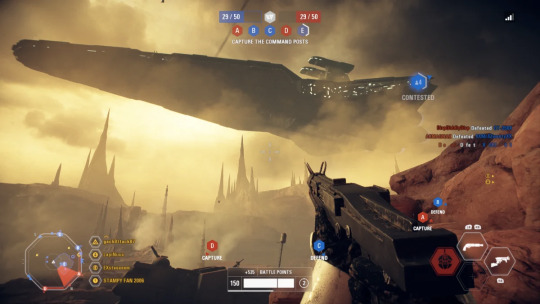
Star Wars Battlefront I was incomplete when it was released. There was no story/campaign mode for single player gamers. The multiplayer mode was at the very least bland, with minimal characters and game modes. The game also only featured characters and maps based off the original trilogy, which alienated fans of the prequels and sequels (yes, there are fans of those eras). EA was flat out lazy. When you pair this with EA’s reputation of under producing games to then later force players to spend more money on numerous DLC packs (downloadable content), fans lost trust in the franchise. This is evident in many of EA sports franchises such as Madden NFL, Battlefield, and most notably The Sims franchise. Although many games are using microtransactions to make more money, many of the most popular games that offer a variety of game packs are free these days, most notably Fortnite and Call of Duty: Warzone. EA still charges $19.99 for the Star Wars Battlefront II game. Alessandro Fillari for Gamespot also mentions this in their review,
“Battlefront II plants itself in the same territory as free-to-play games, with much of its content and characters tucked away behind progression walls and randomized loot crates. This is an especially disappointing reality for a full-priced release.” Alessandro Fillari, Gamespot.com.
Although we agree here, I personally think his score of 6/10 overall is a bit harsh for the game.
This takes us to Star Wars Battlefront II. When I heard that there was a sequel coming out, I already had doubt in the second installment before it had even been released. I was wondering how is EA going to mess this one up? From my personal gaming experience, I believe Star Wars Battlefront II is a major improvement to its predecessor, but many previously devoted fans chose not to purchase the second game after the disappointment and disaster around the first installment.
CAMPAIGN MODE
Being provided with a campaign mode at all has been a huge improvement from the first installment, but let’s take a closer look at it. The Campaign mode on Star Wars Battlefront II is actually pretty good. It changes up the pace of the story by switching between third person shooting missions, where you navigate the map and take on the empire head-to-head with various weapons, to straight out dog fights in space. Flying Tie fighters and X-wing aircrafts in space is a nice touch to keep you on your toes while keeping the game fresh, because how many more first or third person shooter games do we really need?
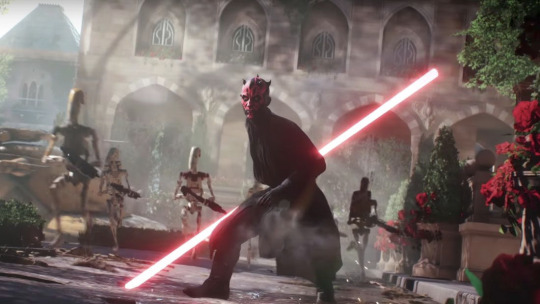
In the story mode you play as Iden Versio, who starts as a high-ranking commander for the Galactic Empire. Since the story takes place right after the events of episode six, Return of the Jedi, the empire falls after the death of Darth Sidious and has left the empire desperate and looking to take the galaxy down with it. Iden Versio sees the error in the empire’s ways and pretty soon into the story she defects to the rebel alliance. This story setup allows players the opportunity to get to play both sides of the war, which I’m sure will be appreciated by some fans. One of my personal gripes is that the story mode itself is more on the short side.
Campaign mode score: 7.5/10
SINGLE PLAYER MODE
Single player mode is pretty standard. It consists of three modes. Battle Scenarios is a mode where you can customize games to play against the AI. You can also customize all the rules and choose which side you would like to play as. In arcade mode you can complete certain missions and objectives with special characters from both the light and dark side. There is also a pretty standard practice/tutorial mode. These are great additions to the game but can get stale and repetitive rather quickly.
Single player mode score: 6.6/10
MULTIPLAYER MODE
This is the games bread a butter. Multiplayer is vastly improved from the last installment. EA has listened to the fanbase and has diversified the game by adding the characters and maps from both the prequel and sequels to the game. One of the biggest flaws of Battlefront I was the lack of iconic characters such as Kylo Ren or Yoda being playable in the game. Battlefront II fixes that with modes like Supremacy, which is a capture the flag type game mode, that allows you to pick era of the franchise you would like to play in. Another online game mode is “Heroes and Villains”. If you ever wondered how Obi-Wan Kenobi vs Kylo Ren would turn out, or what Luke Skywalker vs Darth Maul would look like? Then this is the game mode for you. You can battle with Star Wars most popular and iconic characters using lightsabers, blasters, as well as use the force to fight your way to victory in a 4v4 battle royale.

David Jagneux describes this in his review for IGN,
“What’s great about Battlefront 2 is that it lets you play with all of its toys, no questions asked. Every character class and playable hero is available from the start, and the tedious unlocking grind from launch has been completely removed. Luke, Vader, Boba Fett, Rey – you name them, they’re all here.” David Jagneux, IGN.com.
David gave the game a solid score of 8.8/10.
Multiplayer mode score: 10/10
This brings me to the conclusion. Star Wars Battlefront II is a very good game, and I highly recommend it if you are looking for a great multiplayer game with a few single player modes to throw into the mix. When compared to the first Battlefront to come to the new generation of consoles it is a massive upgrade. I am usually hard on EA as I am not a fan of many of their games, but I have to admit that they have done great job capturing the essence of the original Star Wars Battlefront games for Xbox and PlayStation 2, which is something that many companies have had a hard time doing as of late, even with superior gaming consoles such as the PlayStation 5 and Xbox Series One being released. You have to give props where they are due. Star Wars Battlefront II has my full recommendation and stamp of approval, it’s a fun game whether you are a huge Star Wars fan or are just looking for a diverse online/offline adventure.
Final Score: 8/10 with a great multiplayer mode!
1 note
·
View note
Text
Finished Pokemon Sword and Shield
Spoilers below
Ho boy this one has been a doozy - it’s easily the most controversial Pokemon game so far, what with how many changes have taken place.
Pokemon has managed with annual development cycles for the past 24 years. It’s not like every year has seen the release of a core series game but they’re out enough that you’ll find two or three on every Nintendo console. In fact I think the only console NOT to join in on the fun is the Wii U... It had a bad Pokemon Rumble game but that’s all I remember.
I went into this game with very low expectations. Having played Persona 5, I knew what a good UI felt like. Persona was responsive, you pressed a button and something happened immediately. In scenarios where your teammates get hit all at the same time it happens, you don’t get hit one by one, and when you’re hit by multi-attacks it just..... shows the attack hitting you or your enemy rather than AGONIZINGLY showing each impact one by one.
Pokemon is a game with no respect for your time and Sword/Shield do not show remarkable improvements for this area. This is by and large the greatest flaw of the game, which claims to be catering itself to a younger audience when we know no small child will put up with this boring crap in silence.
The Galar region is a step back from the fantastic Alola region too, with a lack of any proper worldbuilding. In previous Pokemon games you would enter a town and some NPCs would tell you the purpose of the town. Not in this game, where there’s a desert, a snow city, a bunch of other places all with no lore whatsoever. You enter them, fight the gym leader, and leave.
I think that the core gym challenge, however, is one of the best that has ever been in Pokemon. Instead of just fighting a bunch of randos, you complete minigames called a “gym mission”. Past gens have done this (a prime example being Generation 5), but you can tell that GAME FREAK are taking advantage of the console’s power during these challenges, compared to Gen 7 which had nothing of the sort. The game has actual physics in some of the Gym Challenges.
Exploring the Galar region at my own pace, being able to selectively encounter Wild Pokemon which now appear in the overworld.... Biggest improvement by far over the previous gens. This one needs to stick. Your quality of life is much better when you can see all the cute pokemon bumbling around.
I found the characters to be, eh, nowhere near the level of Gen 7′s cast, but pleasant enough to want to see more of. This includes all the gym leaders, the champion Leon, and your pseudorivals Bede and Marnie. Hop, however, is a pain in the backside who becomes more of a loser as the story goes on. I’m not sure if he ever stops being one. No kidding - In the end he just has to accept that he’s a loser and do something else with his life.
The “villain” was just some guy whose home we invaded. He went “F*** it” and tried to solve the energy crisis, then cried to the Champion when it went wrong. This was all just leadup to the awesome final battle against Eternatus, which has no difficulty at all since you can just sit back and watch the fireworks, but has a rocking soundtrack and feels epic enough.
The postgame is lacking, no fun minigames like Gen 7, no dark Ultra Beast story like Annabelle’s and Looker’s, but it was servicable enough. You beat up Jedward and catch a puppy.
The multiplayer aspect is HIGHLY LIMITED. It’s fun to be able to engage in battles against Gigantamax Beasts but it’s repetitive and difficult to matchmake with since you have to join each match individually and many of them are just people exploiting the game’s clock to get the Gigantamax pokemon they want. These people will glitch you out if you try to join them. If you leave the multiplayer on in the Overworld, it has the quality of Dragonball Xenoverse where the ally characters may or may not pop-in every couple of seconds. It’s chaotic and it will slow your game right down.
The pokemon themselves.... In a static image they look super boring, but in the Pokemon Camp minigame and during certain battle animations they can look impressive. My favourite was the ladybug pokemon, which is covered in spots that will flicker in its middle stage and outright swirl in its final form. I also enjoyed Scorbunny’s epic kick, everything to do with Sirfetch’d, and a certain fighting type’s special move called “No Retreat” which has all 5 of its components band together in a Spartan march.
Overall, I would not say the game is worth the high price tag of £50. Get it cheaper if you possibly can.
Ratings below:
Gameplay: 5 - A servicable battle system but it needs to move much faster.
Story: 3 - Even the other characters treat the story like it’s interrupting your true journey; Pretty much nonexistent, then crammed into the final 5 minutes before you fight the Champion. This game was better when it was just letting me do my own thing.
Music: 6 - Not up to Sun/Moon’s standard. Wild battle theme is good. Hometown theme is among the best. Everything else is pretty generic. The basic gym leader theme fights Gym Leader Piers for supremacy.
Presentation: 2 - Considering the amount of resources this company have and how cheaply it continues to present its games, the only way this could get a lower score is if they went back to what Gen 1 looked like.
Replayability: 7 - Benefitted greatly by the Switch’s multiple profiles. I could see myself trying a nuzlocke run for laughs. This game also gives you more peace and quiet, making it ironically more replayable than the superior Gen 7.
Timewasting degree: GAME FREAK. I christen this development team with its own category, because I cannot express enough how much they want to waste the player’s time on innocuous crap. God forbid I play a game which wastes my time more and create the “Worse than GAME FREAK” category.
Overall total: 4.5 out of 10. This game has its cute parts but you can do so much better. It’s time to start trying.
40 notes
·
View notes
Text
Book Review... Nadine Brandes, “Romanov”

Rating: 2.5/5 stars
Genre: YA, historical fantasy
Part of a Series? No
Summary: Anastasia “Nastya” Romanov was given a single mission: to smuggle an ancient spell into her suitcase on her way to exile in Siberia. It might be her family’s only salvation. But the leader of the Bolshevik army is after them, and he’s hunted Romanov before.
Nastya’s only chances of saving herself and her family are to either release the spell and deal with the consequences, or enlist help from Zash, the handsome soldier who doesn’t act like the average Bolshevik. Nastya has only dabbled in magic, but it doesn’t frighten her half as much as her growing attraction to Zash. She likes him. She thinks he might even like her.
That is, until she’s on one side of a firing squad . . . and he’s on the other.
***Full review under the cut.***
Overview: I first learned of this book while watching some random YouTube videos, and decided to give it a try when I stumbled upon it at the bookstore. I usually like historical fiction and reimaginings of history with some fantasy thrown in, but this book didn’t quite live up to my expectations. The major stumbling blocks, for me, was the plot and characterization: the complete idealization of the Romanovs made for uninteresting characters and the focus on magic and preserving the family made the plot lack suspense. While I did enjoy some ideas, like the mentions of forgiveness, they ultimately weren’t showcased enough to carry the book through to a satisfying conclusion.
Trigger Warnings: family separation, violence
Evaluation
Writing: Brandes’ prose is fine. It’s not overly descriptive or awkwardly sparse, giving readers enough information to know what’s going on and what the environment is like. It’s pretty easy to get through quickly, so if you’re looking for a quick read, this prose style is good for that. However, there is quite a bit of telling in some places. I found many instances where Nastya would tell the reader what she or other people were feeling or why people were doing things, when most of that could be left implied or shown rather than stated directly.
Because about 2/3 of the book takes place during the Romanovs’ exile, the prose can get a bit repetitive in the way it describes Nastya’s feelings. She’s frequently making internal exclamations about her family, about Alexei’s illness, or about how much she hates the Bolsheviks. It’s noticeable, but then again, what else has she to think about with such a limited frame of experience?
Plot: As stated earlier, about 2/3 of the plot takes place during the Romanovs’ exile, which makes for a very limited range of experiences. Like novels that take place in prisons or similar settings, I think this one could have worked if more emphasis was placed on how the family made friends. Instead, the central focus seemed to be the magic plot, which, to me, felt forced due to the lack of worldbuilding that would have convinced me that magic was part of the everyday experiences of the Romanovs and Russian life. Because the magic was so inconsequential, this book would have worked better as a historical fiction novel about friendship or learning to see other points of view or something similar, but as it stands, the magic plot isn’t suspenseful enough to carry the story on its own.
The last 1/3 did focus on magic and an invented history of the Romanovs, but it felt disjointed and meandered a bit. It also didn’t feel very suspenseful for me in a way that mattered, and I didn’t really feel engaged in the plot one way or the other. I think it would have been stronger if Brandes had just stuck with the events from history.
Characters: The biggest problem I had with this book is that all the Romanovs seemed to be portrayed as saints who did nothing wrong. While I can understand wanting to write a sympathetic account of the family, I grew a little tired of the strong message that Bolsheviks were bad and anyone working for them was just desperate. The whole book seemed to be decidedly pro-White Army, and Nastya even explicitly condemns communism at one point, which is strange given that there was absolutely no insight into the drawbacks to an absolute monarchy. I would have liked to see some nuance, such as the struggle between characters who believe in autocracy vs democracy, thoughts about the Romanovs’ decadent/opulent lifestyle, etc.
Nastya, too, seemed idealized in that she’s not much different from a lot of YA heroines out there. She’s smart and tough, and when she does wrong, it’s in pursuit of the right things, so she doesn’t really have any flaws. Nor is her voice enough to separate her from others I’ve read; we read the story from her first person POV, but I didn’t feel like her voice was unique.
Zash, our other main character, likewise didn’t have much personality. He’s somewhat broody with conflicted loyalties, but I didn’t see enough of him to truly get a sense of who he was.
Other
Romance: Brandes concocted a romance between Nastya and Zash, which could have been fine if more groundwork was laid. Instead, Nastya seemed to fall for Zash at the first offer of kindness, and even contemplated revealing family secrets to him. To me, it felt forced.
Research: Brandes claims in her author notes that she did research for this book, and while I can see some places where research was apparent, there doesn’t seem to be more than a very surface-level dive into Russia during the Romanovs’ exile. Instead, the book feels like it idolizes and idealizes the Romanovs, which, in my opinion, doesn’t make for the most interesting story.
Recommendations: You might like this book if you’re interested in the Romanovs, especially during their exile. You might also like this book if you’re a fan of the animated Anastasia movie.
2 notes
·
View notes
Text
The Edge of Acceptable

Hello friends! Previously I said I would try and post an article between then and my "Doctor Who: The Edge of Time," review. This was mostly due to my not knowing how long it would take me to finish playing the game. Well, intrepid reader, it appears I overestimated the game's length, as I have beaten it and I have many things to say. Before we begin, however, I would like to state that this review will be full of spoilers, so if you plan on playing "The Edge of Time," for yourself, you may want to hold off reading this. There, you've been warned. Let the spoilers commence!
The game begins in a laundrette somewhere in a dark corner of London. After some strange anomalies, a television kicks on, and the Doctor, played by Jodie Whittaker can be seen on screen. Speaking directly to you, she tells you that you're the only person that can help her. Suddenly a shift in the lights (and possibly time) occurs and the laundrette is filled with a black sludge reminiscent of the purple gunk from "The Legend of Zelda: Breath of the Wild." Peering from the individual dryers along the wall are black sludge monsters with murky red eyes that stick to you. If you get close to them, they lunge and crack the glass.
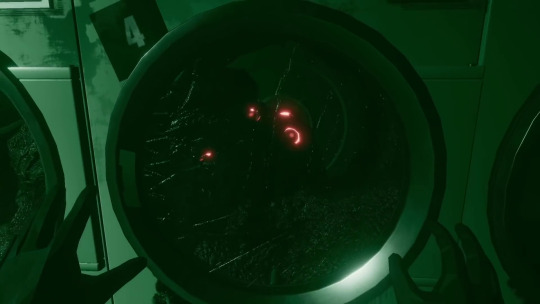
After explaining to you that the universe is like a hard drive and that people and moments are like individual files, the Doctor informs you that someone has installed a sort of computer virus. Lost on the edge of time, she is unable to help you, but using a bit of her Doctory magic, she's going to help you help her, and by extension- save the universe. It's no small order, but you're raring to go!
It's during this point, however, that I did find myself slightly frustrated with the game design. As the Doctor begins speaking to you, she's oftentimes drowned out by the music, making it hard to hear what she's saying. When I went to the options menu, I was surprised to see that no option to lower the music volume was available. There was however a subtitles option, which I opted out of due to my feeling that seeing subtitles somewhat sullied the immersion. The next bit of frustration came from the following scene in the back office of the laundrette.
Another big source of frustration was the controls. While in the office, you're made to find the code to a safe, and then enter the code into its keypad. As excited as I was to be playing a new Doctor Who game, I almost rage quit due to the sheer difficulty of entering a simple four-digit code. Now, it's worth mentioning that at this point, I was still using my Playstation controller. After switching to the Playstation Move controllers, my experience improved exponentially. However, even with these Move controllers, performing minute actions felt a lot like trying to unwrap a lemon sherbet while wearing a pair of woolly mittens.

You learn a little bit about the late owner of the laundrette. He used to be a janitor at Coal Hill School, and he's now a pile of ash on a chair. The books strewn about the office show he was a man interested in strange phenomena dealing with time and space. The Doctor, using a bit of Time Lord magic, has stashed her sonic screwdriver away in the safe. After fishing it out, I took great glee pointing it at literally anything I could. Sadly, the sonic has very little actual interactivity with the surrounding world other than pre-scripted actions like opening doors that carry the story to the next stage.
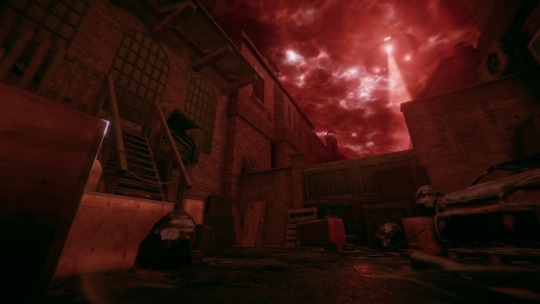
Once outside, you get your first glimpse at a Dalek saucer, floating above the sky like something from the Dalek Invasion of Earth. It's a great little callback, and the alley conjures images of Totter's Lane. After building a signal booster with junk from the alley, you call the TARDIS to your location, where it materialises like the beautiful Ghost Monument we all love. Now, I'm not too proud to admit it, but as I walked into the TARDIS for the first time, I got a little misty-eyed. It really does feel like you're walking aboard the greatest ship in the universe. The people at Maze Theory did a fantastic job rendering the Thirteenth Doctor's TARDIS interior. And yes, the console does dispense custard creams. Trying to make my boyfriend laugh, I held the biscuit to my mouth and was pleasantly surprised when my virtual character actually ate it!
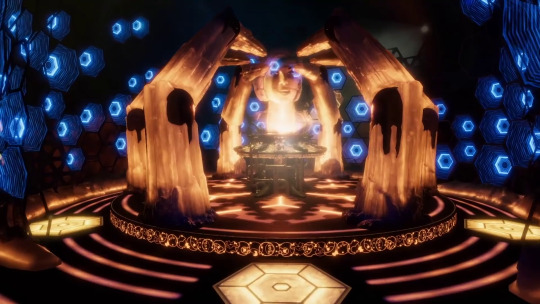
This joy was short-lived, however, because I was once again at the mercy of needing to perform exacting tasks with rather sloppy controls. What should have been a joy (piloting the TARDIS), was instead another rage quit moment. Really though, this is more of a problem native to virtual reality. You're only ever as good as your tools, and Move Controllers aren't hands. Controls are one of the game's biggest flaws, really. For instance- there is no duck or crouch function. Meaning that despite all of the wonderful little Easter eggs peppered throughout the game, the second you drop one on the floor, it's gone forever.
After being recruited by the Doctor, you're treated to a title sequence in full 3-D glory. Let me tell you, the time vortex has never looked cooler. I was like David Bowman entering the Star Gate. Moments like these are when the VR really shines. Afterwards, the first place you land is sort of a head-scratcher. You arrive on what looks like a planet, where you're being stalked by a creepy race of aliens known as Hydrorks. I was slightly sad that you never have to actually worry about them. They're mainly there to scurry about in the shadows. Despite the warnings of a woman you're speaking to over a holo-pad, they don't ever actually attack you. You can stop right in front of them and shine your torch at them and walk away unscathed.
If you recall from my Doctor Who and Video Games article, I complained that one of the biggest issues Doctor Who games have is puzzles. This chapter of the game has the most egregious of the puzzles and had me worried that it was about to devolve once more into a series of irritating puzzles, but they lessen as the game progresses, much to its benefit. I would like to mention though, that the game does take accessibility into consideration. Puzzles involving colours also incorporate shapes for those that are colour blind. You can also switch between hands with your sonic screwdriver, a fact that I, as a left-handed person, wish I would have discovered far earlier in the game.
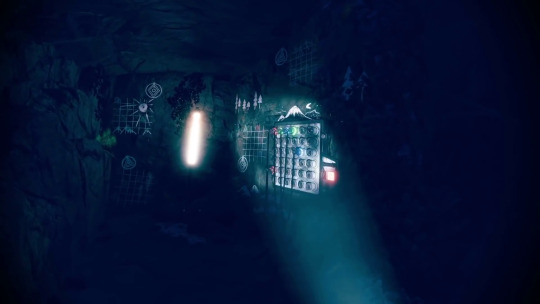
After getting to the lift, you discover the planet you're on is a sort of space ship. The effect of leaving what seems like the outdoors only to find a giant window overlooking alien planets was like something David Lynch would do. I was reminded of episode three from "Twin Peaks the Return," when Dale Cooper exits a room in a building surrounded by a vast purple sea, only to find himself climbing out of a boxy spaceship surrounded by a network of stars. This kind of otherworldly experience is yet again another strength of VR. After a series of puzzles involving lasers, you meet Emer, the ship's computer that forgot it was a computer. Remember how I mentioned David Bowman earlier? Well, the "2001: A Space Odyssey," vibes don't stop there, as Emer's interface looks a lot like HAL 9000. It's a great little homage.

Before leaving the ship, you save Emer onto the sonic screwdriver and find yourself a time crystal. The time crystals are artefacts the Doctor needs you to collect to save the universe. It's a little vague in that "It's a video game, so just go get the thing," kind of manner. But it's a video game, so I'm not even bothered by it. After arriving back on the TARDIS, the Doctor uploads Emer into your brain. Emer's job is to help you along with little hints here and there. I was a little disappointed because the only reason I can imagine they did this is because they only had Jodie Whittaker for six hours on the day she recorded her dialogue. Having the Doctor speak to you like her closest friend is a rapturous bit of nerd joy, so replacing her for a bit is regrettable. But Emer is a likeable character so you don't really mind. The only time Emer really gets under your skin is when she's dropping hints repetitively. You may know exactly how to solve a puzzle, but the mechanics aren't as spelled out. Having her tell you what you already know, over and over again begins to grate on you.
The next place you visit is a very shabby looking Victorian London. You know right away that you've entered Weeping Angel territory. However, the classic Who fans will love the fact that part of this portion of the story incorporates Magnus Greel's time cabinet from "The Talons of Weng-Chiang!" I could tell the people at Maze Theory threw this in for the nerds out there. The Weeping Angels portion of this chapter is easily the creepiest moment in the game. There's a jump scare that had me jumping out of my skin. For full immersion, headphones are a requirement as the sound design is full of little creaks, groans, and stabs as the Angels make their way toward you. The incorporation of the cherubs (which you never see) and a baby pram only adds to the nightmare fuel.
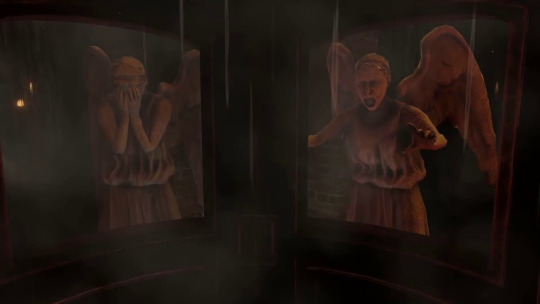
This isn't to say that this sequence is without criticism. One of my chief complaints is that it's a very repetitive sequence. Once you do the first portion, you know exactly how to do the next portion. It then becomes a waiting game which is more tedious than tense. If they'd had varied up the gameplay in this section, I would have said it was the best part of the game. Instead, the Angels only play a minor part, and once you know how to beat them, their terror factor plummets. After a while, the worst part of getting caught by an Angel isn't the dying, it's the waiting for the level to reload. Even with my PS4 Pro, the loading times are egregious. Expect to spend a lot of time staring at the floating orange embers that are the loading screen. At least you can fiddle with the sonic screwdriver while you wait.
After receiving the next time crystal from Magnus Greel's time cabinet, it's time to move on to the next phase. The Doctor begins to tell you a little more about who is tearing apart reality- an entity known simply as The First... or the One. I honestly can't remember which, and the internet isn't much help. It's not a very memorable name, much like the title of the game itself. This "First One," is the very first form of consciousness in the universe that has awoken to find her creation of other forms of life is a disappointment to her. Our penchant for death and destruction has lead her to believe that the only course of action is to reboot the universe, hence the reality virus.
Our next stop is Metebelis...Four? I would be lying if I said I wasn't massively relieved to discover they weren't sending us to Metebelis III. That would have been cruel and unusual. When arriving at Metebelis IV, you're greeted with a gigantic temple structure. In VR, its size and design are really grand in scope. I was reminded of my visit to Durham Cathedral with its impressively high vaulted ceilings. After a quick time jump, you find yourself in a point in history where the Daleks have taken over the planet. I really enjoyed the music cues in this part, because you knew right away you were about to encounter Daleks. You can almost hear a digitised version of their voices in the score that really sets the tone.
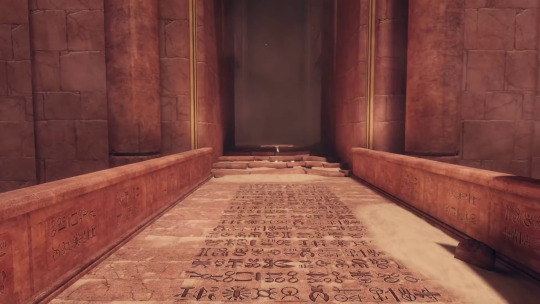
This portion of the game was probably my favourite. A lot of it is sneaky stealth missions, which gradually increase in difficulty. The only problem with the stealth portion is you really need to bait the Daleks into following you at points. It goes against usual stealth mechanics which at this point are generally universal. When you accompany this with long load screens, and Emer repeatedly telling you what you already know, it gets to be a bit much. But getting to drive around as a Dalek later on in the level makes up for this in spades.
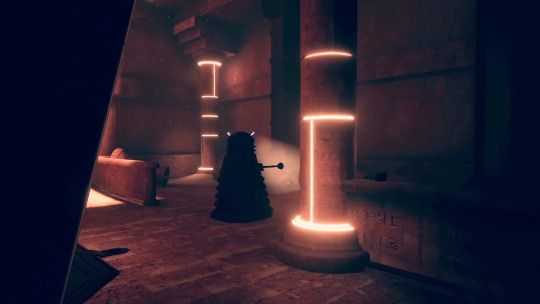
Much like the Weeping Angels portion of the game, the key to beating this section is patience. You can systematically work your way through the level by budgeting your time. If you take out drones and Daleks in the right order, it's a piece of cake. It becomes a memory game at that point. That being said, I still had a lot of fun. Dalek vision was especially cool. After tearing ass through various temples, you find yourself sort of outside of time. The reality virus has almost torn the universe apart but using memories of the places you've been, you're able to hold things together long enough to stop the First One. The Doctor congratulates you and tells you what a star you are. Emer is given human form for her efforts. The TARDIS drops you off back at the laundrette, seemingly to do it all over again, which leads to my biggest question about the game. Am I supposed to play it again, or was that just a meta-joke from the designers encouraging you to replay at your own leisure? Furthermore, is the Doctor not also now stuck in a time loop along with the player?
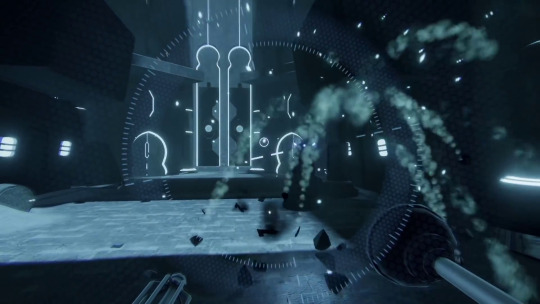
I've not done a second playthrough, so I can't rightly say if it adds more content to the game. I'm going to bet the answer is probably no. This is a shame because for a game that has been marketed for as long as it was, and had its release date pushed back almost two months, it's surprisingly sparse. At the very beginning in the Laundrette, the Doctor mentions both the Stenza and the Zygons, which made me expect to see at least one of them throughout the game. What turned the laundrette owner into a pile of soot? Hell, you don't even see the sludge monsters from the laundrette again. I expected them to be a far bigger problem than they were. The game is surprisingly devoid of other characters. Perhaps this is a symptom of VR, but disembodied voices, static Angels, skittering background aliens, and rail driving Daleks are the most interactivity you'll have with other characters.
Throughout its runtime, I couldn't shake the feeling that "The Edge of Time," was originally supposed to be a much bigger game. While I'm aware that most VR games are generally shorter in length, this feels truncated. Perhaps it was from budget issues or internal problems, I can't say. But is it twenty quid's worth of video game? I would say that maybe with DLC it would be, but as is, it feels incomplete. The ability to select chapters does increase replay value. I could see myself pulling up the Weeping Angels level for a group of friends. However, due to the lack of variety in said level, I don't see the novelty lasting long. If they were to release a couple extra levels that were more like survival horror where you were in a creepy mansion avoiding Angels, or maybe something with Cybermen or Zygons I could see the value increasing. I wouldn't want to pay more for these levels, mind.

Compare the price of this game to going to a movie with friends. These days £20 will buy you maybe two tickets to see a film. The game is basically a feature-length episode of Doctor Who. So if my boyfriend plays the game, and my wife and friends, then sure, it's paid for itself. But for people who might play this game alone, they may want to wait until the price drops a bit. I had a good time playing the game, myself, but I have to temper that response with the fact that I am a massive Whovian. Will it have the same appeal for casual fans of Doctor Who? That's really the big question, isn't it?
When the game was announced, my first reaction was to shake my head at the BBC's inability to make a proper Doctor Who game. As you may recall from my article on Doctor Who games, this stems from the fact that going with VR was pre-emptively cutting off a large portion of gamers. While there is a very real demand for Doctor Who video games, VR is still a niche market. Not everyone is going to buy VR just to play one game as I did. And even if they are, VR systems aren't cheap. I had to purchase mine on credit. The cost of admission is now much higher than the asking price of twenty pounds. That being said, the game manages to prove that Doctor Who video games can still try new things. The formula and gameplay are very close to what a lot of people have wanted for years. While I still don't feel like we've seen a truly great Doctor Who game, I had a lot of fun with this one.
#doctor who#the edge of time#video game#vr#virtual reality#dalek#daleks#weeping angels#thirteeth doctor#Jodie Whittaker#maze theory#playstation#psvr#bbc#tardis#Sonic Screwdriver#Time and Time Again#metebelis 3#magnus greel#emer#doctor who video games
2 notes
·
View notes
Text
Armor Bird Reviews: Jurassic World: Fallen Kingdom - A One-And-A-Half-Year Retrospective

If you have been following my writings and ramblings and original works and DeviantArt favorites for long enough, you'll know that I am unashamedly a dinosaur fan - I never outgrew the phase because despite what people have told me both online and off, palaeontology, like other sciences, is not specifically a child's thing - obviously dinosaurs are cool, but there is a lot of technical stuff that you'd need college degrees to understand in the field, too. While I certainly am a stickler for accuracy when it comes to dinosaur portrayals, however, I am also not ashamed to admit that I have a love for fictional portrayals of them as monsters, too. Jurassic Park, which was - for its time - pretty much a reconciliation between the "prehistoric monster" imagery of dinosaurs in popular culture and the latest discoveries about the actual fossil animals during its production, is my favorite movie of all time, partly for this reason and partly because there's a lot of depth and sophistication to it as well - a sophistication that modern movies seem to be utilizing less and less. Even the Jurassic Park franchise itself was not immune to this trend, and although it still remains my top favorite franchise of fictional media, the changing conceit of what audiences want in an entertaining film has dragged it along for as much of a long and bumpy ride as just about everything else Hollywood has to offer. Still, even in spite of it all, there are a lot of things to like about the sequels we got since that groundbreaking original - I'm admittedly one of those people who actually enjoyed Jurassic Park III, though in fairness I was too young upon first watching it to really pick it apart and analyze its numerous flaws, and I also heaped a lot of praise on Jurassic World upon my first review of it... in hindsight, perhaps a little generously. Although I won't pretend that everything since The Lost World (including TLW itself) is flawless and that the complainers are wrong, even the infamously controversial JP3 had some enjoyable moments in its own right, despite being seen by many as the worst installment of the franchise by quite a margin.
Which leads us to the most recent film of the franchise, 2018's Jurassic World: Fallen Kingdom.
I had intended to review this movie for a good, long while - back when I was a more prolific writer I used to write film reviews shortly after seeing the movies in the theater, though schedule concerns have obviously made that too difficult. But there's a silver lining here, in that by not reviewing a film I've seen until much later (...well, much, much, much later as the case may be), I have the time to really sit down and think about what made the movie tick or not, and oftentimes have come down from my rush of excitement by the time I actually get off my tail and write the review itself. There are exceptions, of course, with certain films actually leaving me disappointed as soon as I left the building, but these cases are mercifully rare. I'm happy to say that despite being horrendously imperfect, Fallen Kingdom wasn't one of those cases. I was genuinely entertained by it more than 50% of the time - which is, for better or for worse, the highest compliment I can give the film because, as we shall see, in some ways it really is quite terrible.
As always with my movie reviews: SPOILERS UNDER THE CUT!
I watched Fallen Kingdom twice since its release - first in the theater at my home town, and then on rental DVD - and both times, my impression was the same: this movie, in retrospect, plays out much like a big-budget, cinematic fanfiction of the Jurassic Park films or even of Jurassic World (the latter of which I actually consider darkly hilarious for reasons that are highly specific to me exclusively, which you'd only understand if you know what I've written in the past - I'll get to that shortly). This is perfectly understandable, seeing as the director, screenwriter, and production crew have changed considerably from the team that helmed the original trilogy during the ten-year gap between JP3 and JW. Even if the work is canon, it's essentially someone else taking a look at the original franchise material, picking out what they liked about it, and building an original story off of it, oftentimes borrowing characters from the original work and inserting them in (most notably Rexy, and yes, I consider her as much of a character as the humans she menaced in the original movie). Across the board, in all kinds of franchises, this approach tends to fall flat if you don't know about the original work, though I do have to say that there was one very notable exception in the case of Jurassic World, that climactic fight scene with the Indominus rex, which is my favorite part of the movie even if it isn't entirely perfect. Now, I realize that I'm being a bit of a hypocrite by saying that these films are imperfect, because almost a decade ago, a friend and I co-wrote a megacrossover fanfic where Jurassic Park was the most prominent franchise by quite a margin (and didn't even start out that way to boot - my own selfish preferences caused elements of the franchise to slowly bleed in until a recycled plot of the second and third movies took over the whole thing). What makes it truly embarrassing to me is that the fic didn't even need the series' involvement in the first place, and my choice to shove it in anyway was one of the numerous factors that led to it going completely off the rails and turning into a tremendous tangled mess of clumsy writing and mishandled characterization, not just with JP itself but with almost all of the dozen other continua that got dragged in as well. Obviously, the fact that Fallen Kingdom is restricted by its very nature as a sequel to the one franchise only thankfully precludes the sheer absurdity of what my co-writer and I had inadvertently wrought back then, but upon rewatching the film I couldn't help but notice that in a few ways, it does ironically come off as being quite similar to my own old shame, albeit coincidentally, though it still earns points for choosing to be a Jurassic Park/World film and sticking with that conceit, rather than an entirely different film with JP elements shoehorned into it. I've harped on my stupidity as an immature fanfic writer back in the day for long enough, I think, but I felt this was worth mentioning regardless, because like the fic I touched upon above, this is a work I only started having issues with long after the fact, but these days I can't unsee these issues now that I've considered them.
One of the biggest things that stood out to me regarding Fallen Kingdom was that no matter how you slice it, it was trying to be two films at once, and had less time for both than most would have desired. The first half of the movie concerns Isla Sorna being destroyed by a volcano, and everyone trying to get the dinosaurs off of it before they are rendered extinct once again, with another island being noted as their new sanctuary (though of course, one of the antagonists quickly screws that plan over, but more on that later). You could easily make an entire film out of that - exploring the island one last time, dodging potential threats from both the volcano and the dinosaurs themselves, and coming to terms with the fact that not every creature can be saved, and that the end is coming for everyone eventually. The scene with the Brachiosaurus being overtaken by the eruption, with its plaintive wails and iconic rearing silhouette, is proof that such a moral could make a solid closing for this kind of movie, and heck, you could even have the subplot with the executives hoping to exploit the dinosaurs bleed into the movie until, at the very end, you get a scene where their true intentions with the animals are revealed as a sequel hook, rather than being resolved over the course of like half an hour or so in a rushed manner that gives people too little time to consider the implications. And this brings me to my next point.
Remember what I said about that dumb fanfiction I co-wrote having the elements I personally wanted more than my co-writer did slowly fester in true plot tumor fashion until they took over the entire story like literal cancer? As it turns out, what I witnessed in Fallen Kingdom wasn't quite as ridiculous, but kinda sorta similar in its own way. Obviously, Fallen Kingdom isn't so audacious (or ignorant of copyright laws and plain old common sense for that matter) as to let an entirely different franchise stage a gradual hostile takeover of itself, but the somewhat cliched plot of capitalist exploitation being the absolute worst roommate imaginable with a whole franchise's worth of temporally misplaced creatures that can and will kill you if you look at them funny - already done in both the original movie and TLW, and to some extent in JW as well, but still relatable in our current social climate even after so much repetition - still manages to... well, stage a gradual hostile takeover of the movie, and enforces itself in full force during the remaining third or so of the runtime. The antagonists, a pair of cartoonishly evil and somewhat flat executives, sabotage the plan so that the dinosaurs are diverted to the Lockwood Mansion instead of the sanctuary island, and then things escalate when the prototype Indoraptor is bought in and, inevitably, raises hell for everyone involved. As with my previous pitch, the idea of bidding wars over the dinosaurs and the moral debate over the ownership and exploitation of living creatures - something which does happen in the real world - could have made for something interesting, again, if the script wasn't so rushed. Continuing where the hypothetical sequel hook left off, we could open with a discussion between the villains about the implications of what they are doing, followed by the heroes having to deal with the ramifications of such actions along with the involvement of Dr. Wu, the Indoraptor, and of course Blue as a potential prize-winner. Of course this runs the risk of becoming the original Jurassic Park except on the mainland, and thus not really trying anything new, but it could at least give audiences the time to digest the film and appreciate the moments where it makes a genuine impact, even before the dinosaurs end up getting released into the mainland like what happened in the movie itself, complete with the insane amount of ramifications thereof. The Stygimoloch plowing its way through the bidders on its way to freedom was almost as cathartic for me to watch as the climactic fight in JW, and I wish it could've gotten more screentime, or even plucked up the guts to fend off the Indoraptor in a situation that doesn't seem forced, e.g. the hybrid and the Stiggy getting trapped in the same complex, or even Owen luring it over as backup (which is stupider but, given how he got it to bust him and Claire out in the movie itself, isn't entirely unreasonable). As for the Indoraptor itself, I feel like they could have done a bit better with its design, as even underneath the paint job and altered proportions it's still more or less "Indominus 2: Genetic Boogaloo", as I have called it at least once. Still, it has its own appeal as a monster design and, if it weren't for the presence of similar-looking creatures in previous installments of the series, it would certainly have made an impact as a monster. It's almost wolf-like in movement and mannerisms, even werewolf-like, which is intentional given the vintage horror movie homages the production team was going for. The way it menaces Maisie - who has her own set of plot-related craziness to her, but that's a can of worms I'd rather not open - makes you worry for her life, and even fear for Blue when she engages it in battle. I know I'm one of those who actually prefers antagonistic Velociraptors (the inaccurate variety from the films, not the smaller and fully feathered real-world version which I would absolutely take home with me if I could find a way to retrieve it from Cretaceous Mongolia and have it housetrained and okay I'll stop now), but Blue as always is awesome, and after seeing her actually manage to hold her own in her fight against the Indoraptor if only for a short while, there's no denying that anymore - even if that scene with her outrunning the explosion in the boiler room is a bit over-the-top even by the standards of this movie. There is of course no way a spectacle-driven, plaid-speed-paced romp like Fallen Kingdom could surpass the bar set by The Big One and the legendary kitchen scene, but on its own merits, the Indoraptor is a wonderfully serviceable and formidable threat that I just wish could've gotten more screentime and room to develop as a character, rather than just remaining as an unhinged killing machine that exists just to terrorize everyone before exiting the film (the same is true for all the dinosaurs here besides Blue, really, which is sad because, again, I much prefer when films develop monsters as characters rather than mere plot devices). With a little more design work to make him stand out more among the other critters in the franchise and more time to explore his nature, he could easily have become almost as iconic as The Big One as movie monsters go, or at least as much as the I. rex, though the latter bar is admittedly a good deal lower in the wake of how the movie industry has, ahem, evolved.
With that thought in mind, I will now spell out the biggest problem I had with this movie: the fact that it was trying to do so much in such a short space of time. Humorously and ironically, I know almost enough about the issues with my own writing to recognize the signs of that, with significant events being spaced too close to each other, too many characters at once (though admittedly, Zia and Maisie are a treat to watch, Franklin a bit less so but far from unbearable for my taste), and at least one questionable decision on the part of everyone at some point or another, up to and including the writers. There are a lot of things I liked, but not enough time for me to let them sink in, like I was being bombarded with one spectacle after another. It feels like overkill more than anything, and alas, far too many films in recent years have tried to shove that method into people's faces as though trying to say, "Here's your action, here's your fanservice, here's your whatever the whoopity-freaking-doo you consider entertainment, are you happy now?!" (Well, not quite as vitriolic and sarcastic, but you get the idea.) If the filmmakers and the owners of the franchise rights had been willing to accept four movies in the newer series rather than just three, and let Fallen Kingdom be broken up into two separate, slightly slower-paced movies, the problems with each individual portion would likely not have been as significant, and audiences would not have noticed them so readily. Sadly, though, the rapid-fire, dozen-blockbusters-a-year rush-job environment of the modern movie industry was not kind to this film, which is a crying shame. We need more movies that are more relaxed and subdued half the time, the way the original JP film was, and while audiences may have to take the time to once again get used to movies like that, I think it would be a welcome change of pace from the current influx of chaotic, nonstop slugfests and pyrotechnic displays we've become so familiar with.
In tl;dr form, it is with a heavy heart that I have to say that Jurassic World: Fallen Kingdom is, in fact, the worst film of the entire Jurassic Park franchise, even more so than JP3 - though don't get me wrong, as with JP3, I still very much enjoyed it as its own movie, as clumsily handled as it was at times (though even then, the movie itself isn't entirely at fault for it). There's a difference between a movie being the low point in its franchise and a low point among movies in general, a difference which a lot of reviewers need to understand before taking an undeserved dump over movies that could've been so much better if Hollywood had worked just a bit differently. You have to actually try to make a work of entertainment media I consider genuinely terrible, and it was actually a relief to me that even the lowest points of Fallen Kingdom still ranked somewhat midway between "meh" and "shakes hand eeeeehhhhhh" from my own subjective standpoint. I truly hope that the next and presumably final JP film will turn out for the better, especially given that Alan, Ellie, and Ian are all slated to have major roles in it, but I'm not going to dismiss Fallen Kingdom off the bat just because of the issues I have with its writing. If nothing else, it's a perfectly decent popcorn flick with prehistoric monsters in it - and hey, that was pretty much what everyone was there for, wasn't it?
Grading Scheme:
96 - 100: A+
93 - 96: A
90 - 92.9: A-
87 - 89.9: B+
83 - 86.9: B
80 - 82.9: B-
77 - 79.9: C+
73 - 76.9: C
70 - 72.9: C-
67 - 69.9: D+
60 - 66.9: D
Below 60: E
Grades:
Writing: 6
Characterization: 6
Pacing: 7
Creativity: 8
Consistency: 8
Cinematography: 9
World Building: 7
Music and Sound: 8
Effects: 10
Engagement: 9
Final Grade: 78 (C+)
1 note
·
View note
Text
Binge-Watching: Inuyasha, Episodes 36-38
Just a short one tonight! In which I consider the benefits of relaxation, and Inuyasha’s jealousy warrants some discussion.
Room to Breathe
You know, having recently finished my watch of Soul Eater, it comes to my attention that my biggest problem with Inuyasha thus far has been similar to my biggest problem with that show: I always feel like I could use a little more room to breathe. These kinds of simple characters are at their best when the situations allow them to interact, bounce off each other, and just generally be themselves. In Inuyasha’s case, though, the problem doesn’t stem from a sluggish dragging everything down; the plot is perfectly fine, and it’s only gotten stronger as the series has progressed. The issue comes more in the execution, in the million little unnecessary bits of fluff that are packed in around the edges. The repetitive expository dialogue, the lack of real quiet moments... Inuyasha’s pacing just generally suffers from an inability to let the audience process the story for themselves. It’s so concerned that you’ll miss out on some important detail that it doesn’t give you the chance to figure much out for yourself, and while it’s not a massive dealbreaker for me, it does often leave me wishing I could see these characters in more roles than as mouthpieces for information dumping about 50% of the time.
Thankfully, even that flaw seems to be easing up as the show’s gone on, and now that we’ve entered its second big chapter, the show’s flow seems to have opened up along with the world itself. Koga’s introduction to the cast shifts pretty naturally from new villain to unexpected, if wary, ally without the need to spell it out in too many words. We’re allowed to see the wolf tribe from the inside, how they all obviously care for each other, letting us experience them as people rather than just telling us we should care about them. As a result, it’s far easier to get invested in their quest to take down those freaky “Birds of Paradise” (seriously, fuck those things with a rubber chainsaw). Meanwhile, I’m beginning to realize that the episodes in the normal world, where Kagome just bums around her normal life, tend to be the most engaging episodes in the show, because they allow her (and whoever might visit her from the past) to relax and just experience life. Everyone’s personalities shine so much brighter in these quieter, lower-stakes moments, and it seems like the show’s getting better at slotting those moments in to reinforce when the plot comes charging back in. That’s a promising sign, and I hope to see Inuyasha continue to improve upon this going forward.
Let’s Talk Jealousy
I’ve talked at length about how much I enjoy Kagome and Inuyasha’s chemistry. They’re both such expressive, ridiculous characters, able to snipe at each other’s throats one second and guard each other’s backs the next, and I never get tired of how much determination they inspire in each other. That said, it’s also true that when it comes to love, both of them are complete and utter dumbasses with no frame of reference for how to handle their emotions. That’s been clear in the past, but it’s never been as present as it is now, when Inuyasha’s jealousy over Kagome’s newfound connection with Koga ends up boiling over and causing a temporary rift between them. These two obviously care about each other deeply, but their communication skills suuuuuuck. That’s not meant as a criticism, to be clear; relationships are rarely perfect, and I imagine watching them slowly work their way through this obstacle is going to be a big source of their development over the next... fuck, however many episodes we have left. What interests me in the moment, though, is that this is the first time Inuyasha’s tendency towards jealousy and possessiveness has really taken the spotlight, and that merits a little discussion.
See, I’ve been steeped in enough pop culture criticism to be attuned to the fact that 9 times out of 10, the supposedly “romantic” jealousy expressed by guys in rom-coms would, in real life, be a serious warning sign for an abusive partner. And considering that Inuyasha is nothing if not traditional in its storytelling sensibilities, it’s not unfair to consider where its particular depiction of jealousy ends up on the spectrum. There’s actually a fair bit of time dedicated in episode 38 to characters on both sides of the time split hashing out just how big of a line Inuyasha crossed, how much either of them is at fault for the misunderstanding, and how seriously we should take Inuyasha’s bullheaded rashness in the face of a rival for Kagome’s love. And it’s kind of fascinating, because it’s clear that this show is, at the very least, aware of the dangers that come with this kind of trope. Kagome’s friends are initially receptive to the idea of this rash, brooding bad boy who gets jealous over her talking to other men, but the moment she mentions he threatened to kill a potential rival, they instantly go into “dump the jerk” mode. And Inuyasha gets a firm reprimand from Kaede, telling him that his actions merit an apology when Kagome finally comes back. Of course, that doesn’t end up happening, because he’s still an impulsive manchild at the best of times, but it’s clear this show doesn’t just want to let these tropes fly by unchecked. Inuyasha’s jealousy may be presented as harmless, but it’s definitely something he needs to grow out of for Kagome’s sake.
It’s clear we haven’t seen the last of this running theme pop up, so I’ll leave my discussion of it there for now. Just know that I’m greatly intrigued to see how this show continues to handle the hurdles that Kagome and Inuyasha must overcome in coming to support and love each other. They’re still the core of the show, after all; you better hope their story’s going to be one worth telling.
Odds and Ends
-”Man, all we do lately is make graves.” It’s almost like the show’s developed a darker edge or something.
-”He can hear me from that distance! That really is a canine power.” Shippo, have you heard of tempting fate?
-”When you cheat, you don’t get bragging rights!” I am living for Kagome being the most difficult hostage ever.
-omfg, Kagome’s face upon seeing Shippo’s disguise. She’s such a judgmental little shit.
-”Yes, that mutt-face... I mean, Inuyasha!” askjdhaskjd
-”Miroku! Switch places with me!” Congrats, you played yourself.
-”I only let him out of my sight for a moment!” #ShippoBestDaddy
-”I’m in love with her!” HER FUCKING FACE SHE’S SO DONE
-Let’s be real, OPs with sound effects are always the best.
-”Inuyasha... WHAT ARE YOU SUSPECTING ME OF?!” Jesus fuck, that transition was flawless. Get you a girl who can do both.
-”Gramps... wrong move.” Best little brother ever.
-So, is it a thing in Japan that is someone’s badmouthing you, you get the sneezes? Because I’ve seen it pop up a lot in anime.
-”Even your imitation of her is stupid.” GET. WRECKED.
-See, Miroku being a massive flirt is kinda fun. It’s only when he oversteps his boundaries that we cross into creepy territory.
-”It’s a man-to-man promise!” BEST. LITTLE. BROTHER. EVER.
-Yeah, Kaede totally knew who that story was about. What a queen.
-WE DO NOT EAT ALARM CLOCKS ISTG INUYASHA
The journey goes on. See you next time!
7 notes
·
View notes
Text
Lots of Quickies
Hi, I’ve been real busy lately and have started a heap of reviews that I’ve been unable to finish because of time restraints and stress. University can get on my back quickly but I’m finished now so I’m going to finish the ones I started before getting into a top 10 for films, albums and singles for the mid year (probably released before the end of June).
Avengers: Infinity War

The biggest crossover movie event ever pitted together the 20+ heroes against the big bad villain of the Marvel universe, Thanos. With a giant cast full of big names, a range of genres and a massive story to deal with, there were a lot of risks that the Russo brothers faced to make this movie. Despite it feeling supersaturated with characters and having some pacing issues, they were successful in creating a massive, climatic film, and Infinity War is close to the MCU’s best.
Avengers: Infinity War gets an A-
Breath

Simon Baker’s adaptation of the highly acclaimed Tim Winton novel of the same name had a surprising amount of hype for an Australian film. Although there is some gorgeous cinematography, especially with some of the surfing shots, the movie is bogged down by stale acting, shocking character development, inconsistent pacing, and a directionless plot. With the movie just coming under the 2hr mark, it feels overly long and bland, lacking originality in both the surfing genre and the coming-of-age genre.
Breath gets a D
Deadpool 2

Deadpool was an unbelievable success in 2016, shattering records and expectations as it became one of the most successful R-rated films ever. With the sequel they have expanded the universe, introducing ‘the X Force’ for the future of the franchise. This introduces many new strong characters, including Domino (Zazie Beetz) who steals every scene she’s in, and Firefist/Rusty Collins (Julian Dennison) who is works well with the titular character (Ryan Reynolds). Thankfully they haven’t sacrificed the quality of the film in order to universe build, with the sequel being almost as hilarious as the first, whilst digging into deeper themes of mortality and family.
Deadpool 2 gets an A
Hereditary

I generally split horror films into three categories; the aim to scare, the aim to gross out, and the aim to unsettle. Hereditary falls into the last category. It’s been a long time since a film has me shook by the end of it. This isn’t an enjoyable film at all, instead being a tiresome experience of slowly increasing tension and uncomfortableness. This makes it one of the best horror films I’ve ever seen. Toni Collette and Alex Wolff are both incredible and the cinematography and score are perfect, complimenting the story and giving the tension exactly what it needs to flourish. The use of shadows and wide shots create an atmosphere which is unlike any horror movie I’ve ever seen, giving you enough to be scared but not enough to know why. Hereditary isn’t for anyone, it is slow and there are no payoffs for the tension (like jumpscares), but its a testament to how one can build tension on film and up there with the greats of the genre.
Hereditary gets an A+
Solo: A Star Wars Story

Solo isn’t a complex movie. It doesn’t try to be a massive connection story like Rogue One, nor an epic adventure like The Force Awakens or The Last Jedi. Instead it plays to its strength, a low stakes origin story which gives a few characters some extra screen time. And it works to that extent, Han, Lando and Chewie being introduced well and having a fun adventure. It does have issues with pacing and the overcooked “shock betrayals” towards the climax starts getting cringy more than surprising but the journey is enjoyable fun, becoming a simple popcorn flick with a lot of replay value.
Solo: A Star Wars Story gets a B-
13 Reasons Why
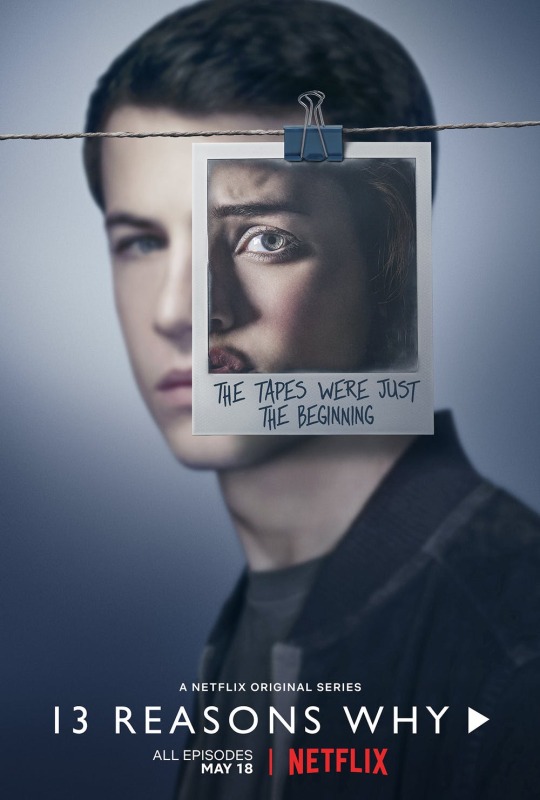
13 Reasons Why has quickly become on the most decisive and controversial TV shows in recent memory. Season One had its issues but still held itself up due to its characters and story development. To put it simple, Season Two didn’t need to be made and it’s very clear that it was forced out. Only three of the characters remain interesting with their story arcs, the script is derivative and banal, and events happen only for the purpose of the plot. This all leads up to terribly cringey moments and a predictable ending (which follows one of the most disturbing and unneeded scenes in TV). I will give the show props though for attempting a realistic court hearing and a beautiful moment in which the main cast come together in memory of their deceased friend, a moment which really should’ve ended the series.
13 Reasons Why gets a D-
Atlanta: Robbin’ Season

Donald Glover’s Atlanta is something else. The debut season explored the African American life, relationships, the Hip Hop scene, poverty and young parenthood in such a unique and fresh way. With Robbin’ Season Glover gets deeper into his characters, exploring their flaws with a realistic lens. It works as well, with each episode making a range of statements, varying from depression and grief, to dating and ‘investments’. By the end of the season the main ensemble has changed so much that season three is a complete unknown. What the show doesn’t pretend to do though is become cliched, with success still an unobtainable goal and their desire to reach it getting more desperate. To summarise, this is honestly one of the best seasons of television ever produced. Also, bonus points for Teddy Perkins being the scariest character ever conceived in a hip hop story.
Atlanta: Robbin’ Season gets an A+
Arctic Monkeys - Tranquillity Base Hotel & Casino
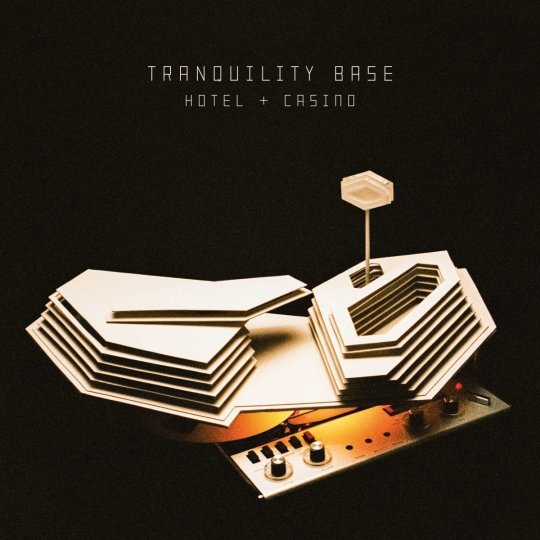
With album number six, Arctic Monkeys attempted to completely re-image themselves. Diverting from their previous, guitar driven, indie rock, TBH&C delves into a smoother, 70s psychedelic inspired direction, with most songs utilising a keyboard to accompany Alex Turner’s almost mindless ramblings (at times successful, other times forced)). Although the band have changed the direction, it seems they’ve changed it to a familiar territory, with a lot of the songs sounds like Alex Turner’s recent The Last Shadow Puppets materiel (and some seeming like the B-sides of them). Although there are stronger moments, there’s a lot of filler and some of the weakest material of the band’s quite consistent career.
Favourite song: ‘The Ultracheese’
Tranquillity Base Hotel & Casino gets a C
A$AP Rocky - Testing
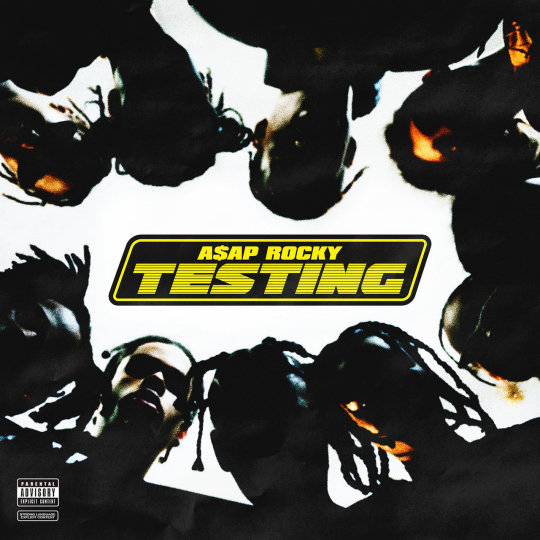
The A$AP mob’s most successful mainstream member, Rocky, has been moving at a rapid rate. His popularity and critical acclaim has been moving up with every release. Testing is both a step in the right direction and the wrong direction. Although it’s is most ambitious record to date, influenced by psychedelic, electronica and ambient music, it’s quite messy and inconsistent. Songs start well to just fall away in their second half and there’s simply too many tracks to keep interest high. A$AP Rocky is doing very different things in hip hop and Testing will hopefully continue to lead him on his path, it’s just disappointing the album couldn’t be stronger.
Favourite track: ‘Purity (feat. Frank Ocean)’
Testing gets a C+
Courtney Barnett - Tell Me How You Really Feel
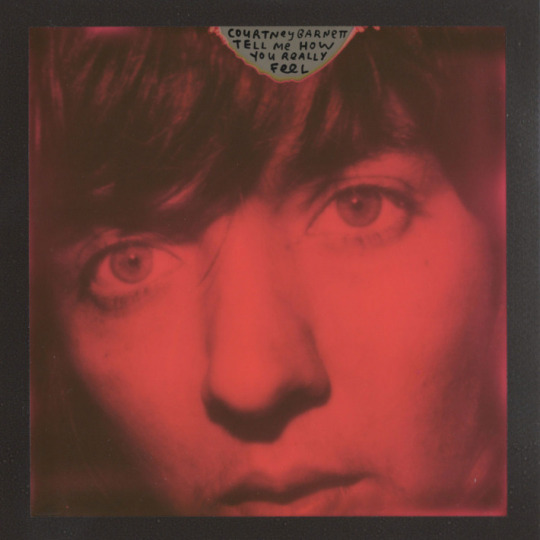
I’m one of those people that didn’t rate Courtney Barnett’s breakout debut. I found it redundant and pretentious. With her sophomore though she takes a lot of what was strong from her debut and worked with it. Although there’s a clunky and repetitive middle section, the first third of the album is very good music. Barnett has a wonderful way with melodies when she tries to write melodic music and her voice, although not the strongest, can be really emotive. There’s still some rambling tracks but her development is quite noticeable and from someone who couldn’t get through multiple listens of her debut, this was an enjoyable album.
Favourite track: ‘Hopefulessness’
Tell Me How You Really Feel gets a C+
DMAs - For Now

DMAs’ debut was something special in 2016. A 90s Brit-Pop revival album which was better than most 90s Brit-Pop. For Now continues their journey through British music, sharing similarities with bands like The Cure, The Smiths, Boomtown Rats and The Stone Roses. It’s very successful, with a wide range of influences and styles being incorporated in their sound. The album is much more consistent their debut, with each track being different yet based around the general ‘feel’ of the album. Unfortunately, it doesn’t have that big moment that their debut had, with no tracks really standing out as something incredible. That doesn’t weaken the album too much though, being one of the strongest releases of the year.
Favourite track: ‘Tape Deck Sick’
For Now gets an A-
Kanye West - Ye
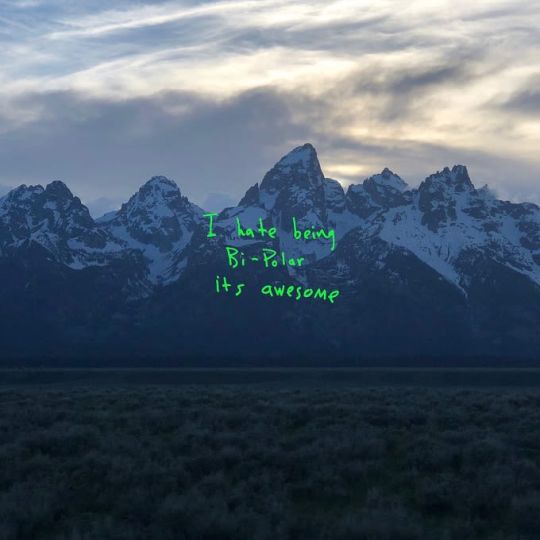
I love this album cover. It’s very simple but very effective, representing both the minimalist, emotional, and cold album that is to come. Ye isn’t the first Kanye album to be lowkey, or sad, or left of field. It isn’t something special in his career though, an album where it really seems he condenses his talent into a short time (it is only seven songs) and really lets the production of the tracks take over, with some of the best moments being when he’s not on the mic (’Ghost Town’ has an outro which is just brilliant thanks to 070 Shake). That’s not to say Kanye’s voice doesn’t shine, ‘Wouldn’t Leave’ is a testament to his lyrical and rapping strengths, but his production is his best in nearly a decade. Although there are some weaker tracks and some cheesy lyrical moments, Ye reminds us why we continue to love Kanye, because he continues to release some of the best hip hop available.
Favourite track: ‘Ghost Town’
Ye gets a B+
Kids See Ghosts - Kids See Ghosts

If someone gave me a list of all the albums released this year before the year started, a collaboration between Kanye and Kid Cudi would definitely be my most anticipated. An album combining two of the most important voices in hip hop during the late 00s, both of them being instrumental in bringing topics of mental illness into mainstream hip hop. Where I expected Kids See Ghosts to be a darker album though, the album is almost a celebration of overcoming their demons. There are still some darker tracks, like the album closer ‘Cudi Montage’, there’s a lot of fiery tracks (like the conveniently titled ‘Fire’) and uplifting tracks (the album standout ‘Reborn’). There are some brilliant moments on this album, whether it comes from the strangely funny yet creepy sample of Louis Prima’s ‘What Will Santa Claus Say’ in ‘4th Dimension’, the ballsy attempt at scat rap in ‘Feel the Love’, or the gorgeous chorus in ‘Cudi Montage’ which features the beloved noise of Cudi humming (God bless Cudi and his biblical humming). Although the track listing works in its disadvantage some tracks do have some strange choices in direction (the end of ‘Fire’ sounds great but doesn’t fit with the song, nor the album), Kids See Ghosts is a contender for album of the year.
Favourite track: ‘Reborn’
Kids See Ghosts gets an A
Lily Allen - No Shame
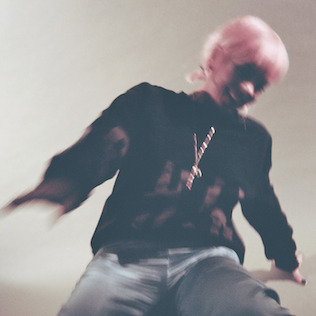
Lily Allen will always be one of the most lovable cynics in music. Her career has been largely satirical takes of political and societal issues through upbeat, pop songs. With No Shame she seems to direct her satire on to herself, literally roasting herself, focusing on her recent divorce, motherhood, drug addiction, and balancing her fame and career with family life. This makes for a very deep, and at times dark, listen. Somehow though, through all this, Lily Allen has made her best album, and maybe the best album this year. Lead single ‘Trigger Bang’ is a brilliant pop song, reminding us of her humble beginnings whilst delving into criticisms of the industry and her place in it. Tracks like ‘Lost My Mind’ and ‘Everything to Feel Something’ are some of her saddest, roughly criticising her lifestyle with some beautiful production and instrumentation. And the gorgeous piano-ballad, ‘Three’, is as beautiful as it is rough, the lyrics being from her daughter’s perspective of Allen not being around for her kids. The album does allow a lighter ending, the final few tracks feeling upbeat and optimistic, something rare from albums which explore such dark themes. Although there are a couple of tracks where the dancehall vibe feels slightly too strong considering the lyrical content, No Shame is something special, and a sign of unbelievable growth for an artist over a decade old.
Favourite track: ‘Everything to Feel Something’
No Shame gets an A
Middle Kids - Lost Friends
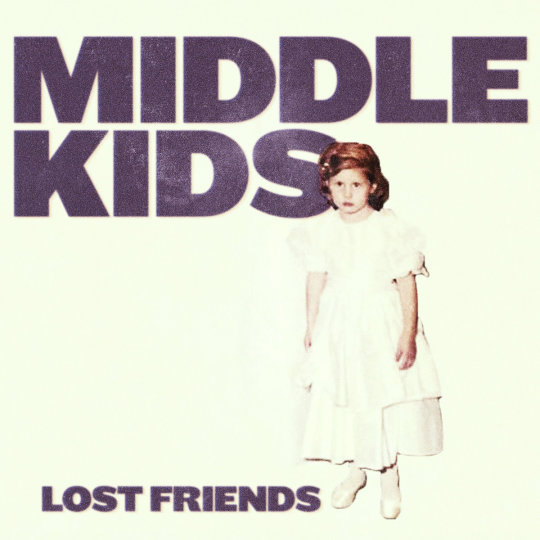
Middle Kids are slowly becoming the most underappreciated act in Australia. Their critical acclaim and industry cred are both high but their commercial success hasn’t blossomed in Australia. Their debut album looks to be their big push (it reached #10 on the ARIA album charts), and for good reason. It’s a really consistent album, with each song being a good alternative rock song. There are some lyrical moments which are average and some songs go for a little too long but each track fits well on the album and are enjoyable. For a debut, it’s a good one and really builds up anticipation to hear more from the band and see where they go.
Favourite track: ‘Edge of Town’
Lost Friends get a B
Nas - Nasir
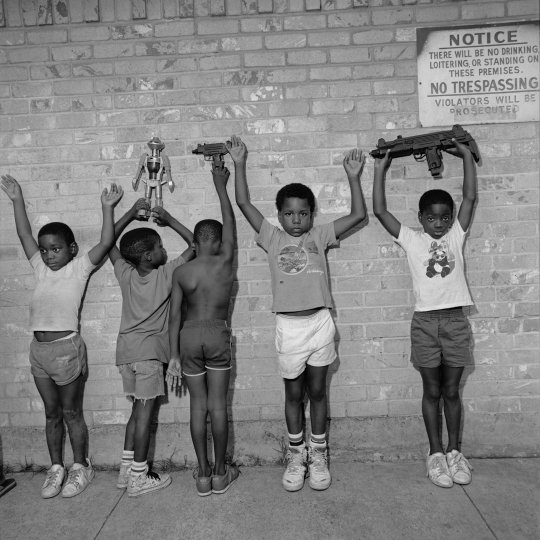
Nasir is another good release from the recent G.O.O.D Music output with Kanye West, although it’s probably the weakest so far. The production on it is really good, with the beats driving most of the songs, but Nas seems misguided and confused on a lot of the tracks. He has good messages behind the songs, referencing themes from police brutality to finances, but he doesn’t seem to really push his ideas, mostly feeling like there is a lack of passion or interest. It’s still an enjoyable album but the feeling of going through the motions is littered throughout and thus is quite disappointing.
Favourite track: ‘Everything’
Nasir gets a C+
Parkway Drive - Reverence

Australia’s premier Metalcore band, Parkway Drive, have has a mixed career for me. Their previous album, Ire, was one of their best, with the songs being meatier and relentless, not holding back at all whilst bringing new influences in. With album number six I’m not sure whether they’ve gone backwards or forwards. It’s different from their previous releases, leaning on cleaner singing much more often, and the influences are clearly from the heavy metal genre of the late 70′s to the early 90′s, but it doesn’t have a strong identity. At times it seems like a tribute album and really doesn’t standout or have its own image and sound. There are still some strong songs but a lot of the album feels like filler and for a band which has been leading the way in the genre in Australia for so long, it seems like they are now falling behind.
Favourite track: ‘The Void’
Reverence gets a C-
Post Malone - Beerbongs and Bentley’s

Every now and then Post Malone nails it and he’s definitely ridden off the success of these moments (think the songs ‘Congratulations’ and ‘I Fall Apart’). There is a hidden talent there which is covered up by the cheesy songwriting and cliched style that he presents. On Beerbongs and Bentley’s he hides this talent better than ever. This is a very mediocre album, which is made even worse since it has 18 songs and drags for over an hour. He seems to run out of things to say very quickly and there’s few moments that really standout as interesting or fresh. It’s definitely a step backwards after the far more interesting Stoney.
Favourite track: ‘Stay’
Beerbongs and Bentley’s gets a D-
The Presets - Hi Viz
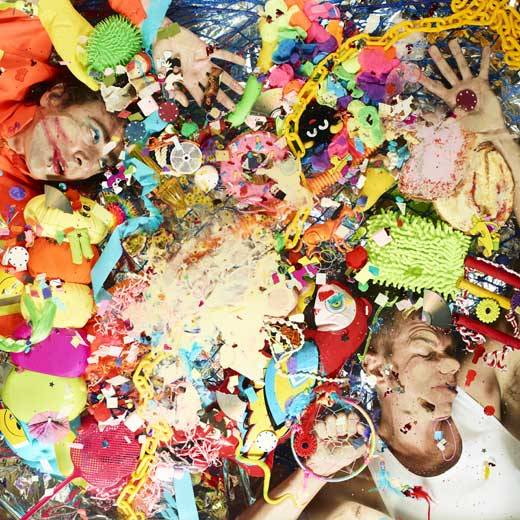
One of my first introductions to music was Apocalypso, The Presets breakout sophomore album which blew away the Australian dance scene. It’s been about 10 years since that release and other than the left-of-field Pacifica, The Presets have been relatively quiet besides festival appearances. Hi Viz is the album they needed though. There are so many certified bangers on this album, from the lead single ‘Do What You Want’ to the giant album closer ‘Until the Dark’. They also bring in some really strong features, with both Alison Wonderland and DMAs shining on both their feature tracks. Although there are some filler in the album, and it does get repetitive towards the middle, it’s an excellent return to form from the band and establish them back at the top of the Australian dance scene.
Favourite track: ‘Feel Alone’
Hi Viz gets a B+
Pusha T - Daytona

Daytona was the first album from the G.O.O.D Music trail of releases of the past month and it really kicked off the project well. The production is really strong, the instrumentals on each track are solid, Pusha T’s lyrics are great (like usual) and the features fit nicely. I think the major weakness is that at times Pusha T’s voice doesn’t fit nicely with the music, especially with the mixing of his vocals at times. It seems to sit too high in the mix and seems out of place. Other than that though it’s a really solid album and an enjoyable listen.
Favourite track: ‘If You Know You Know
Daytona gets a B
#avengers infinity war#deadpool 2#breath#solo a star wars story#hereditary#13 reasons why#atlanta robbin season#arctic monkeys#a$ap rocky#courtney barnett#DMAs#kanye west#kids see ghosts#lily allen#middle kids#nas#parkway drive#post malone#the presets#pusha t
15 notes
·
View notes